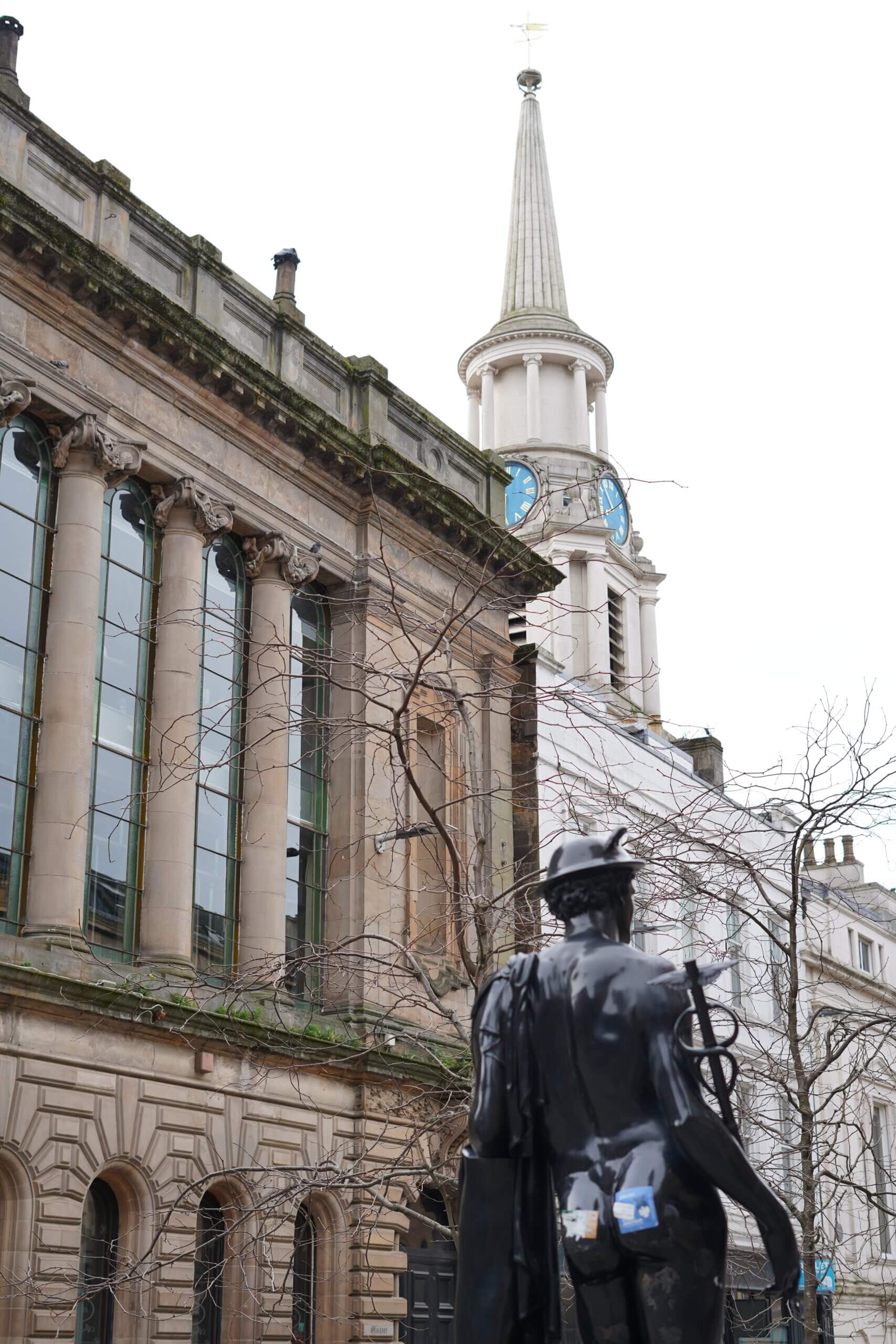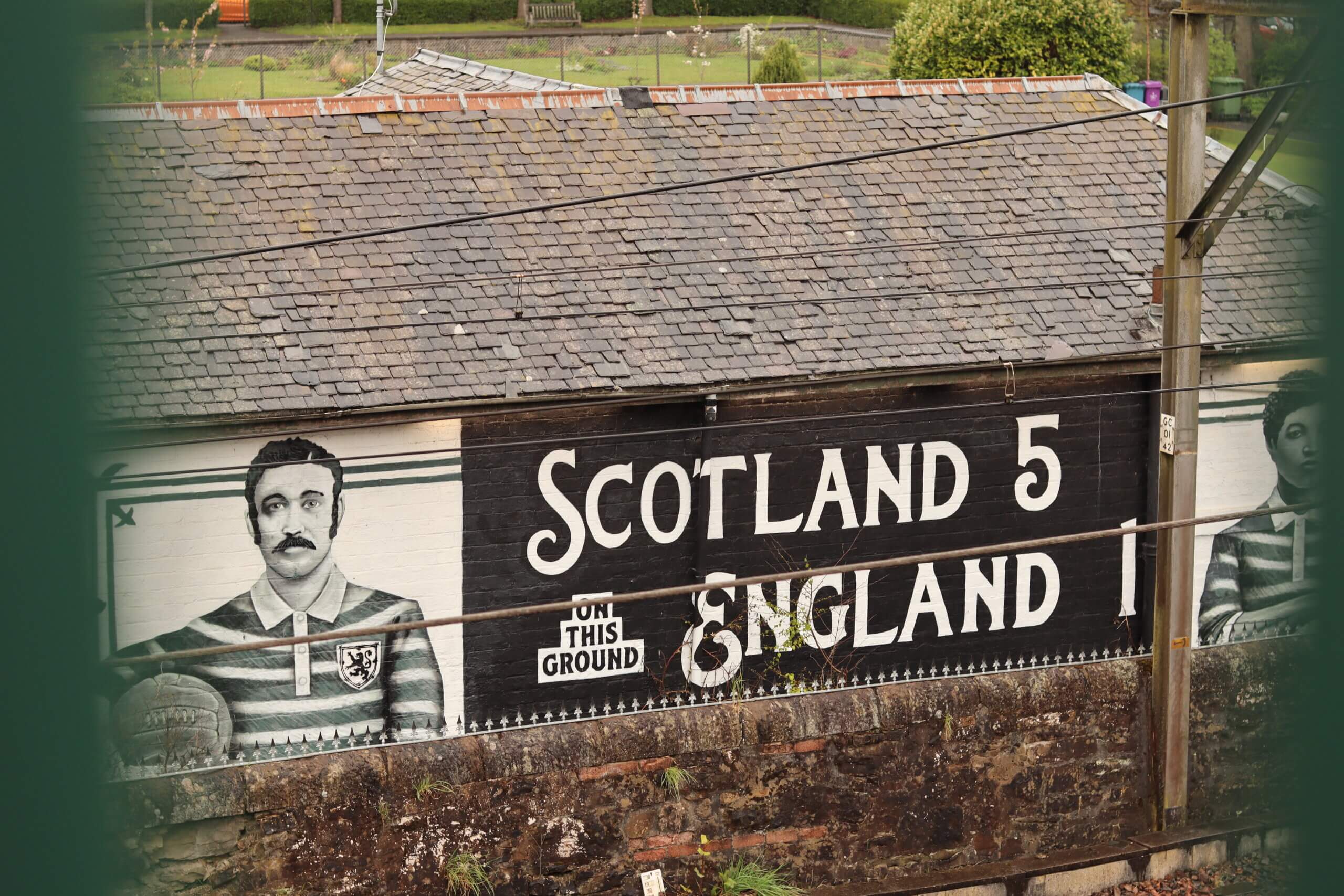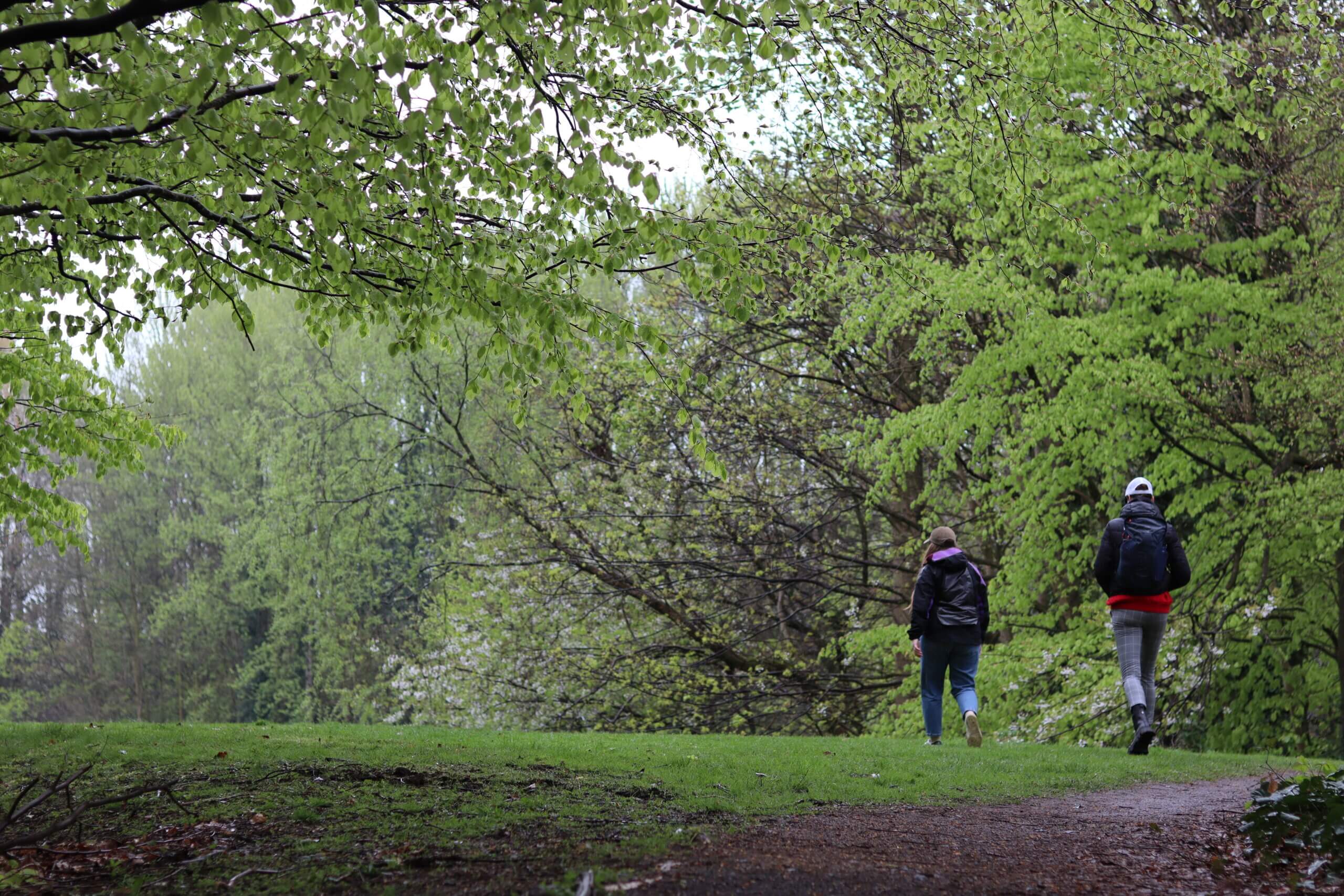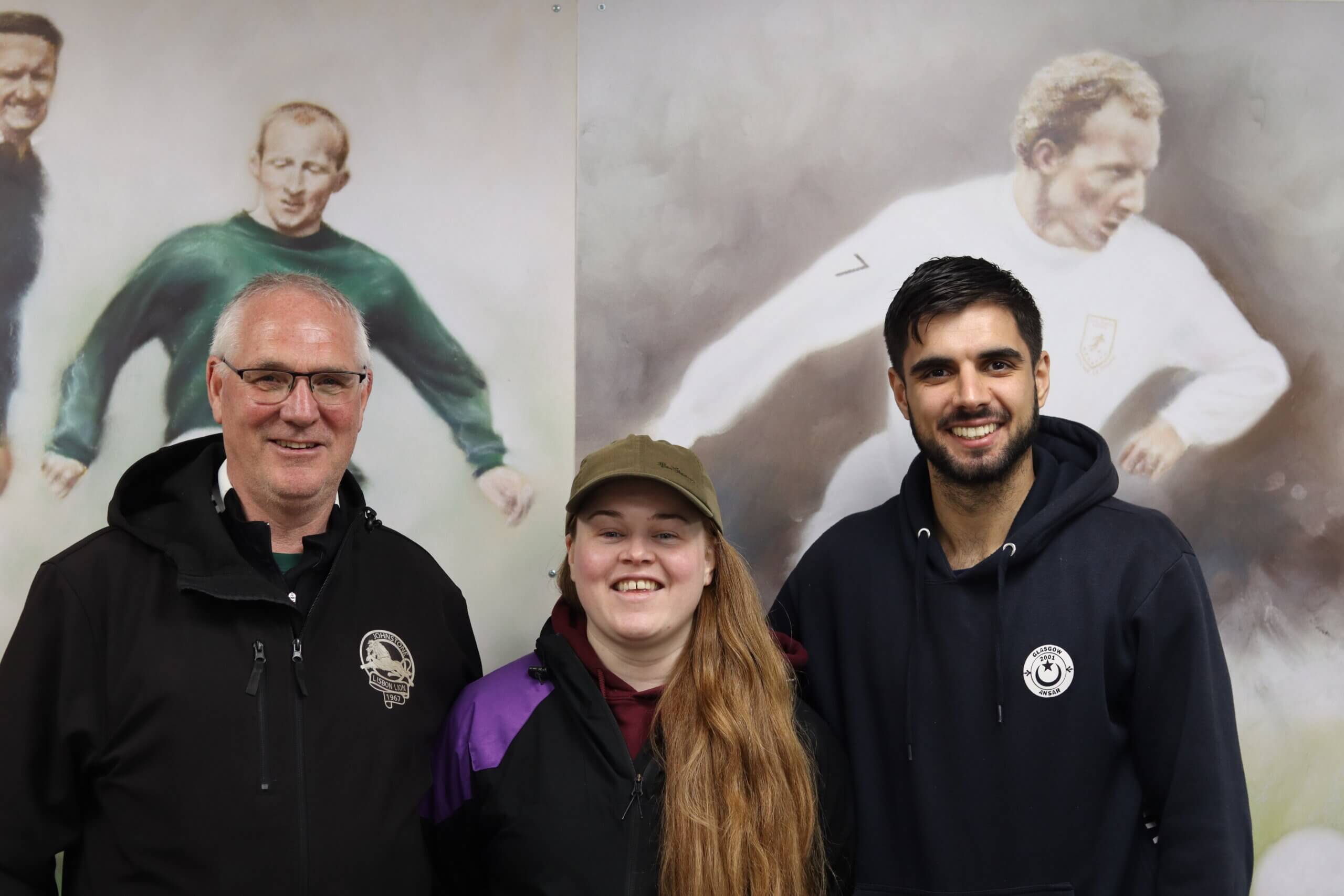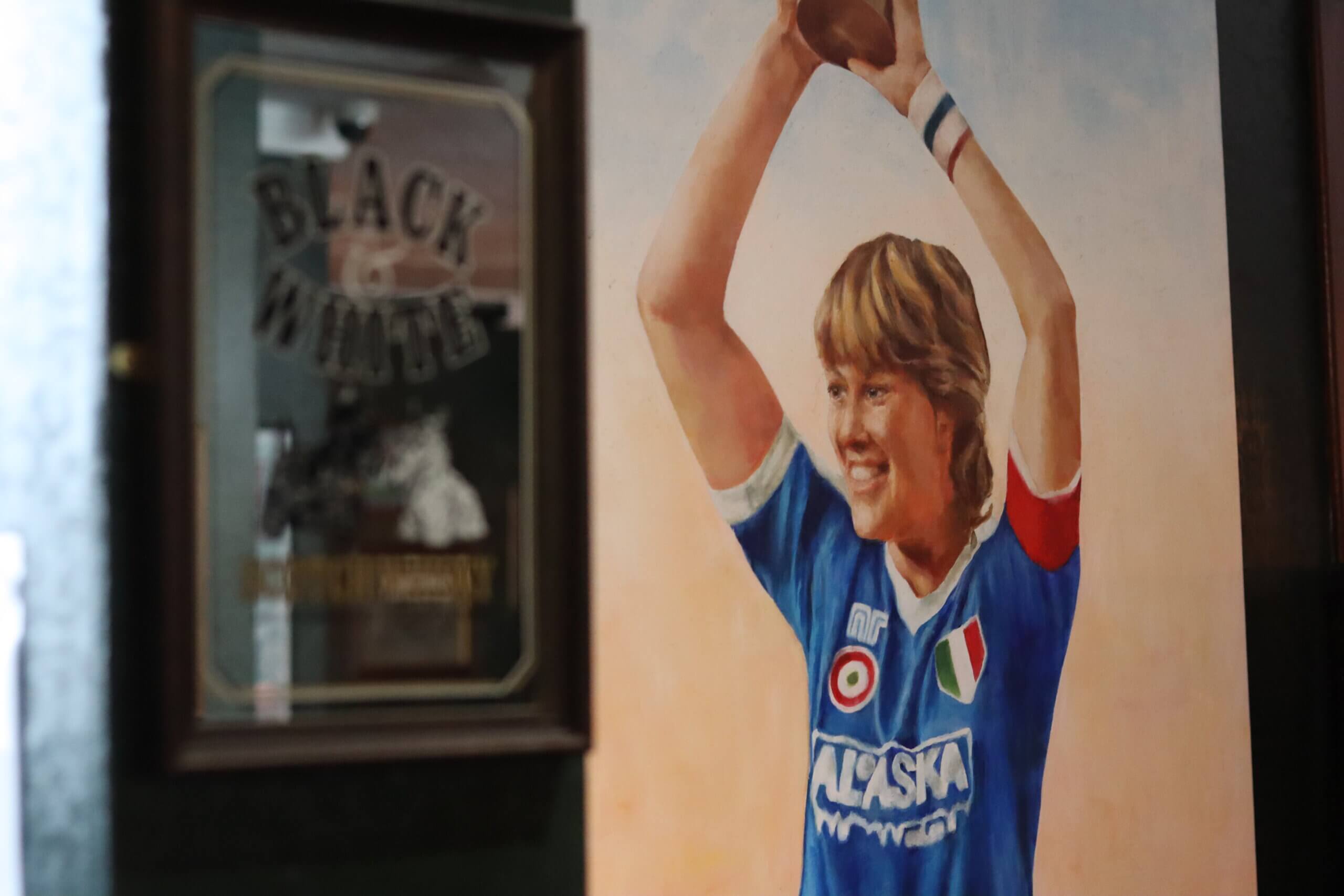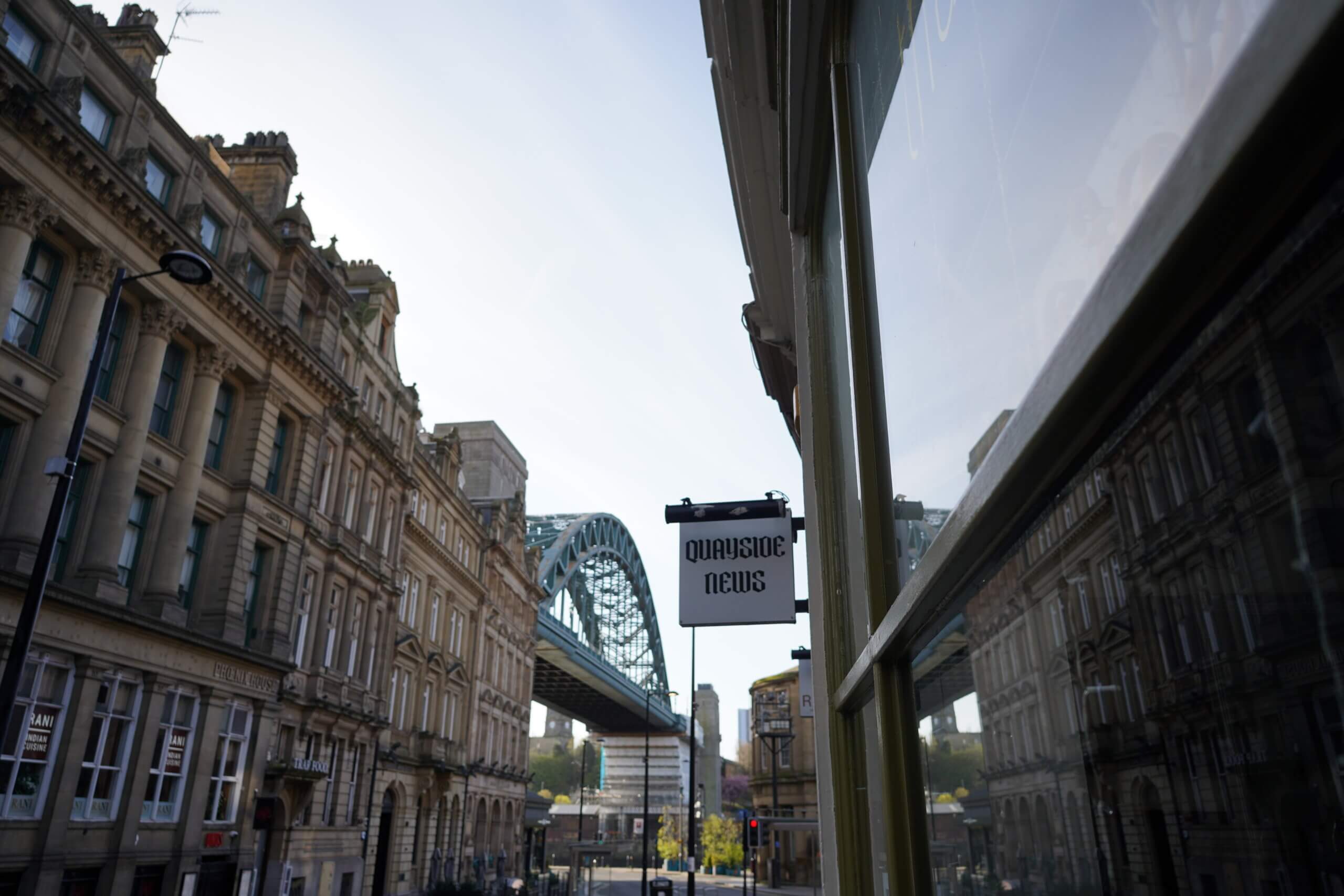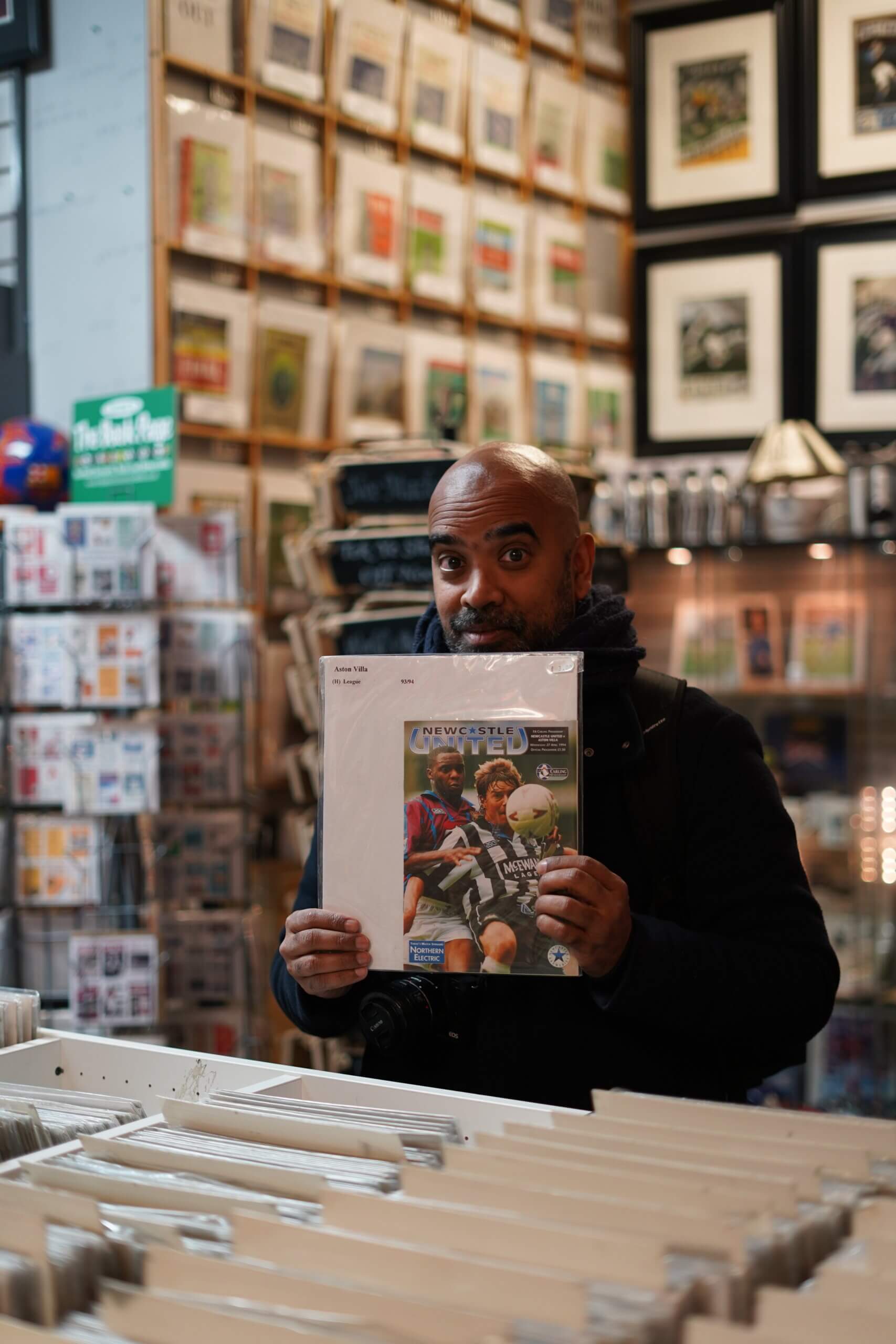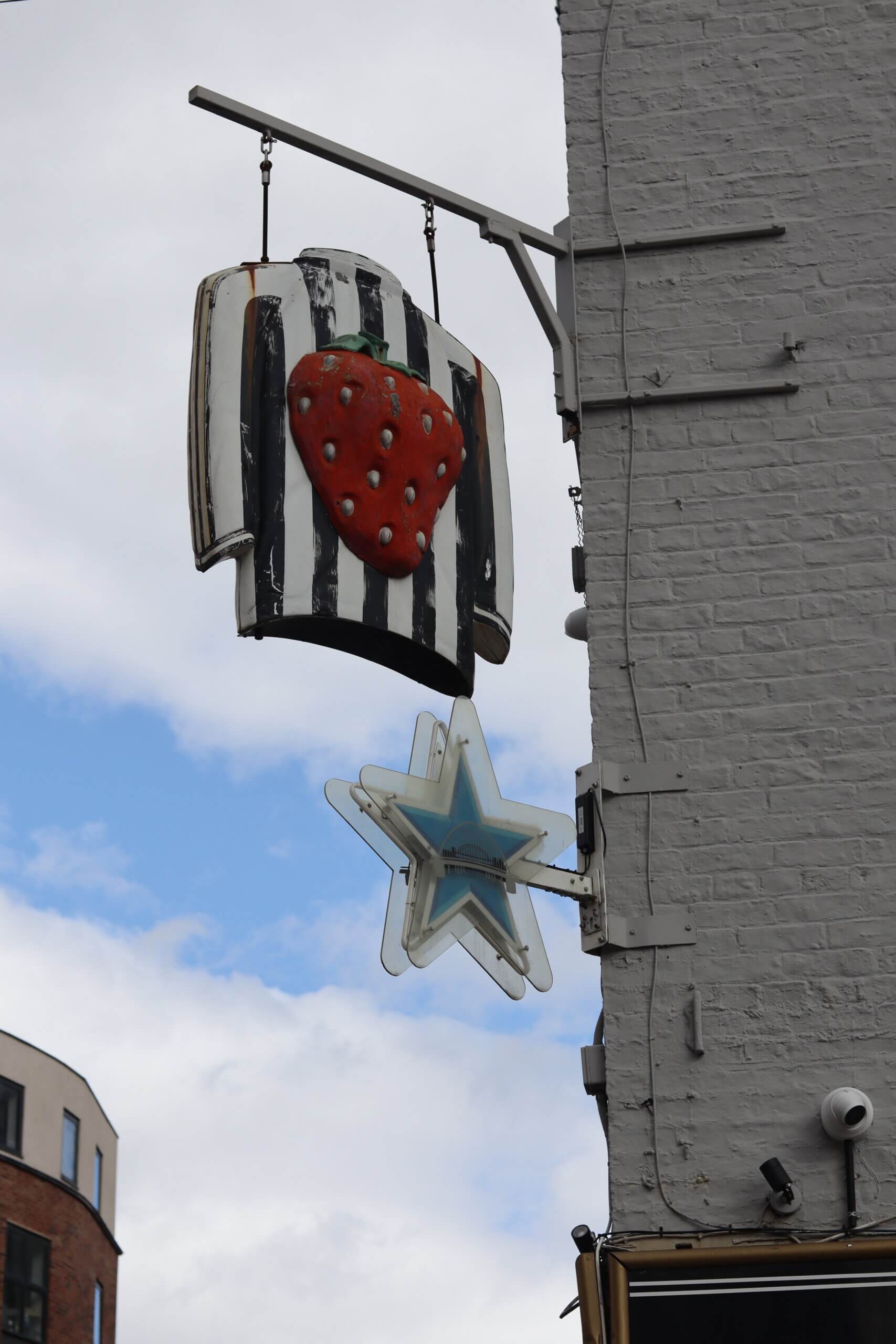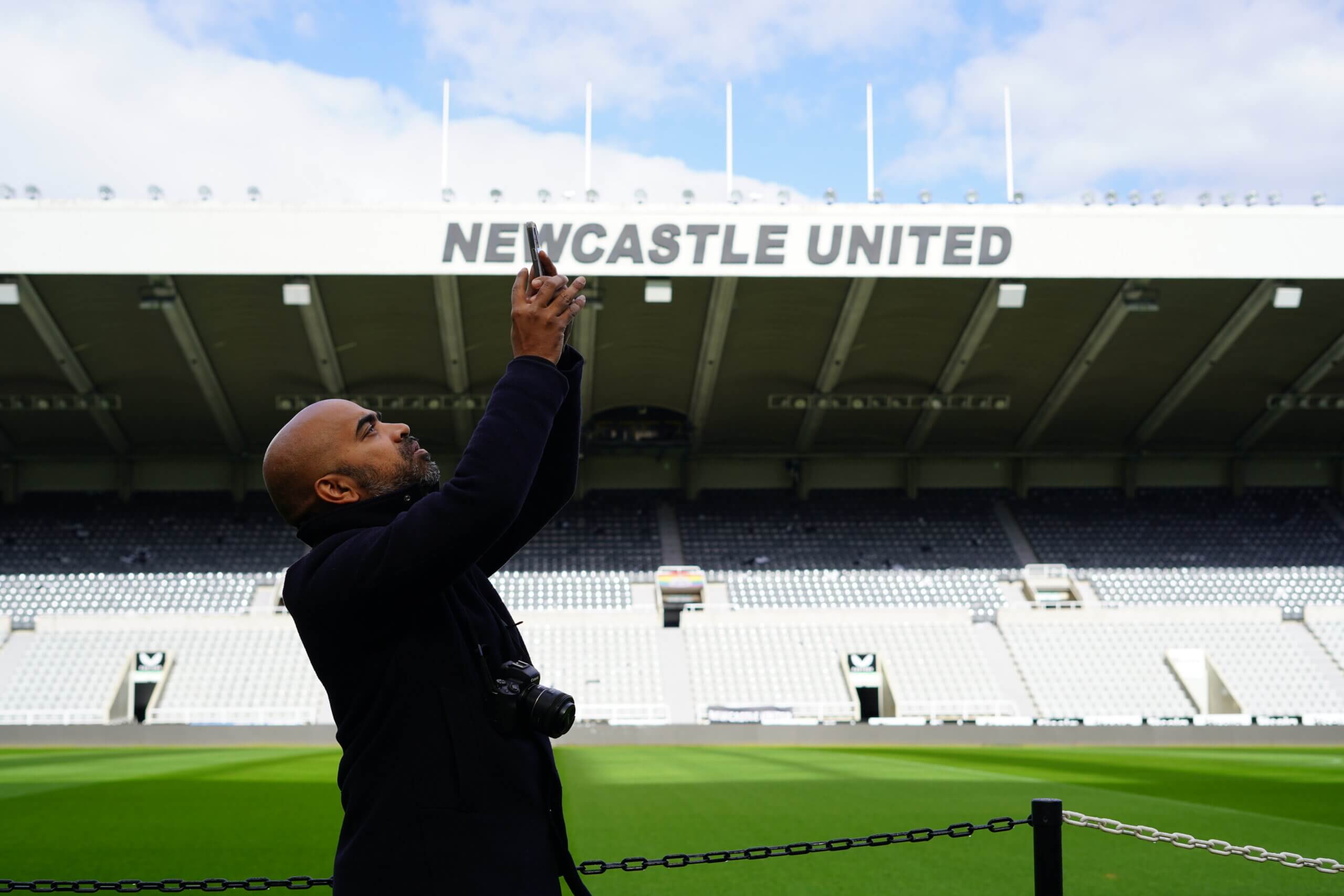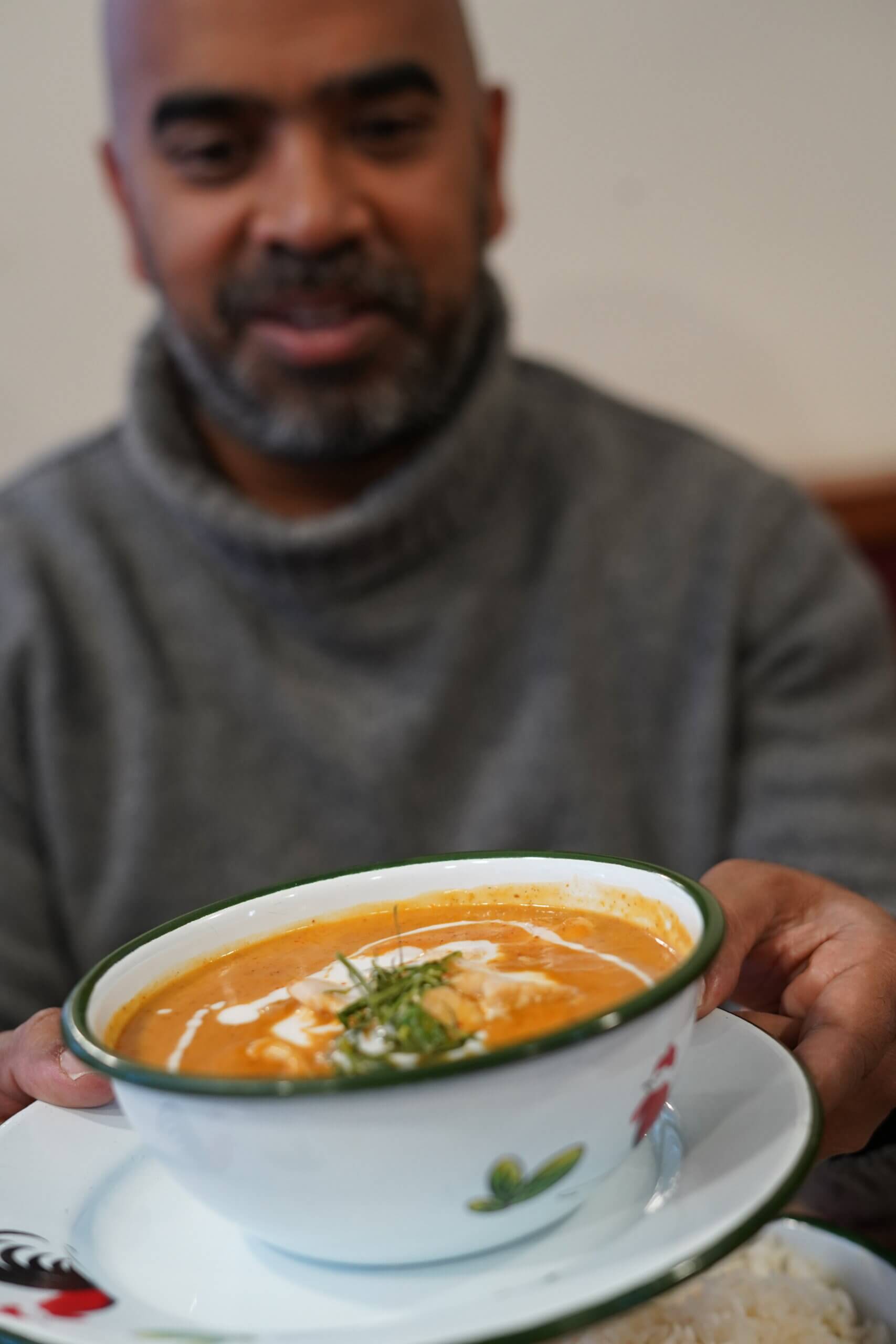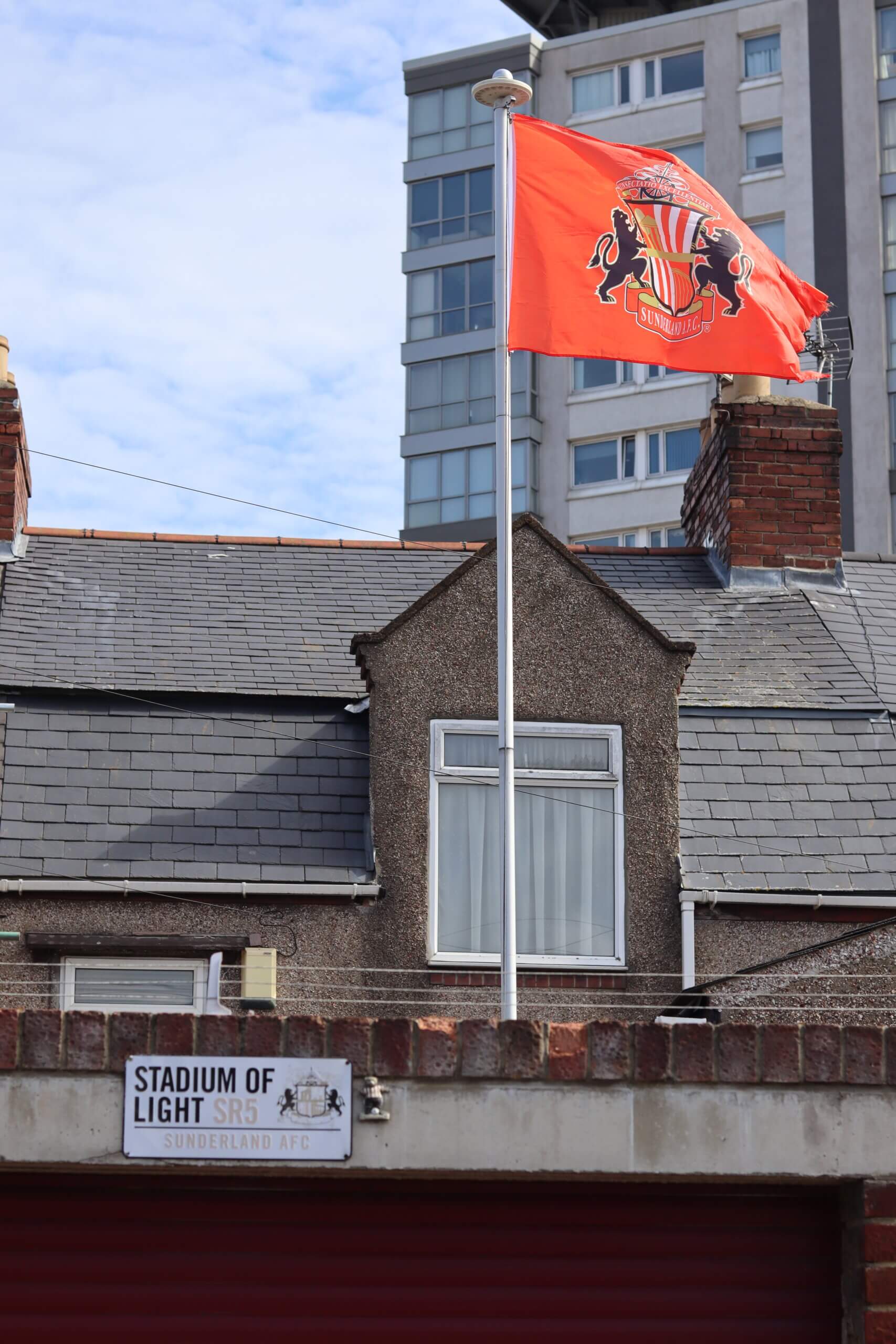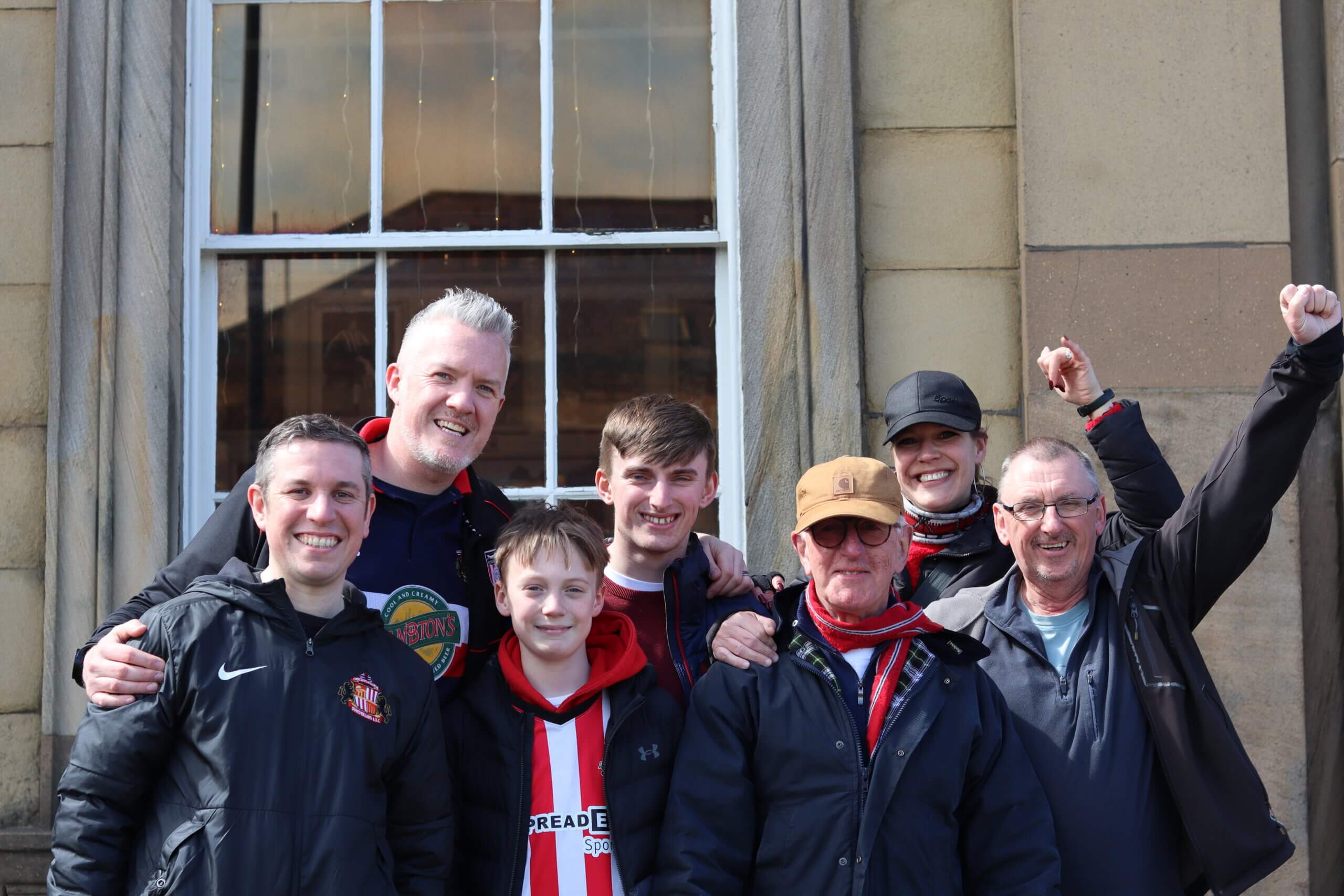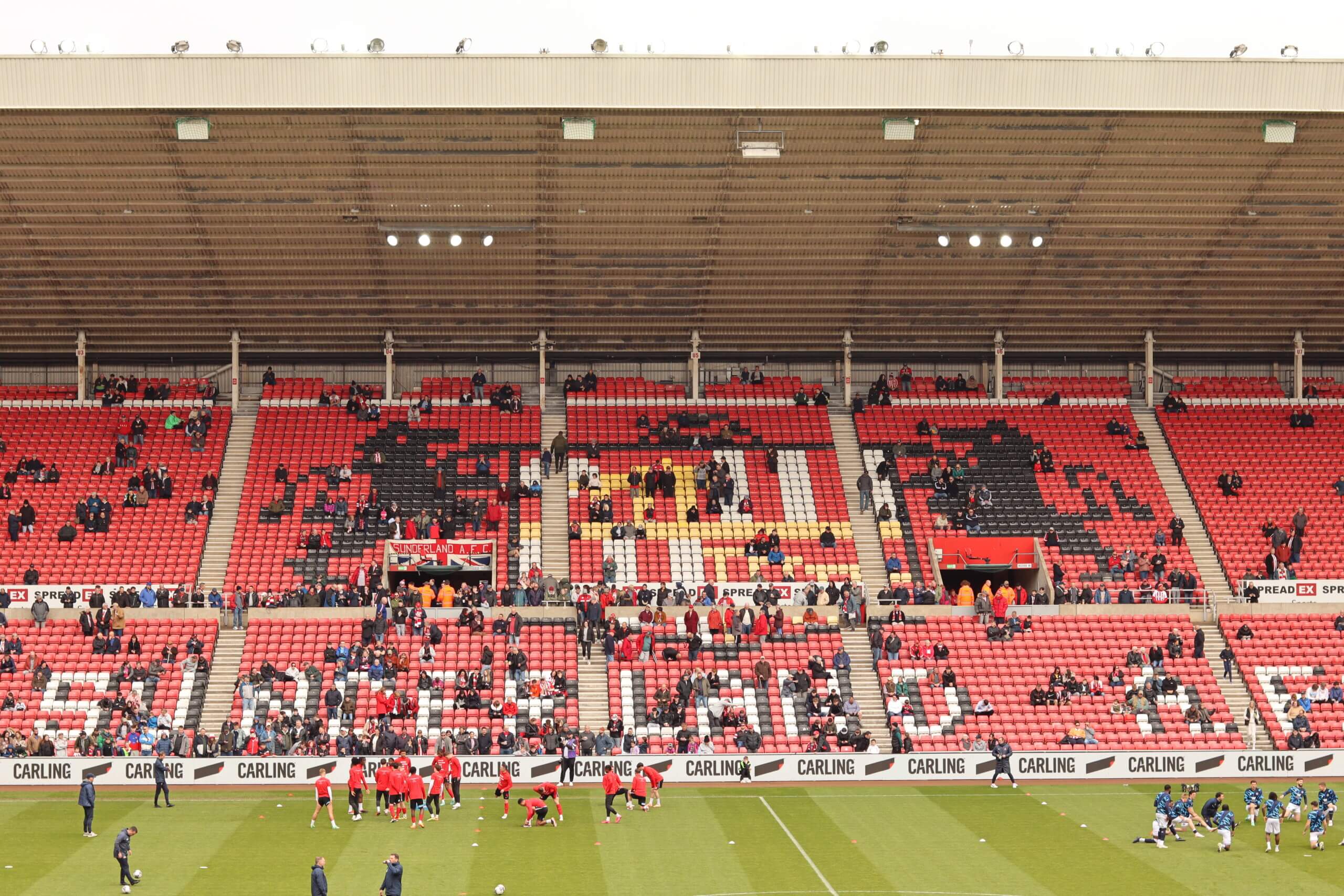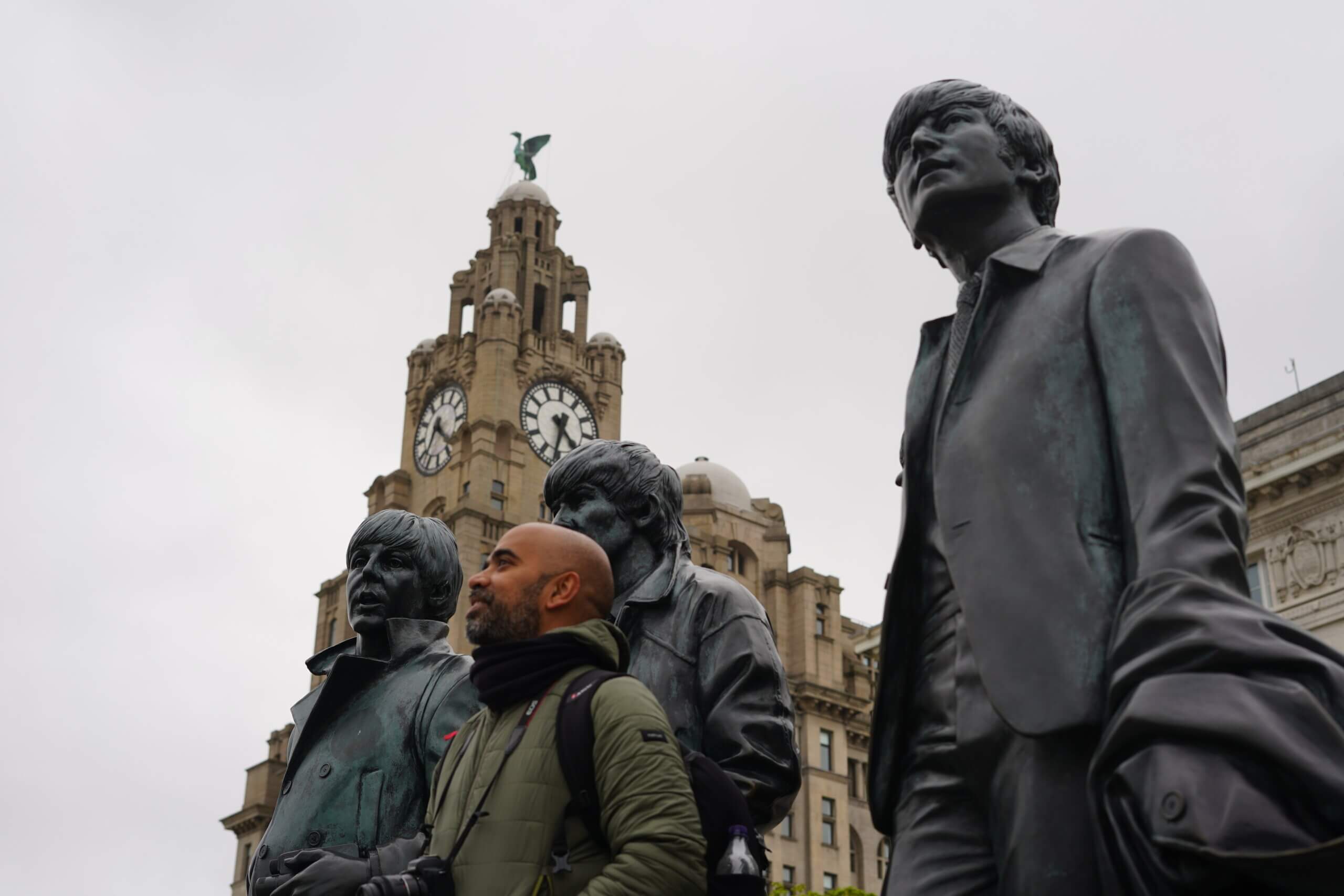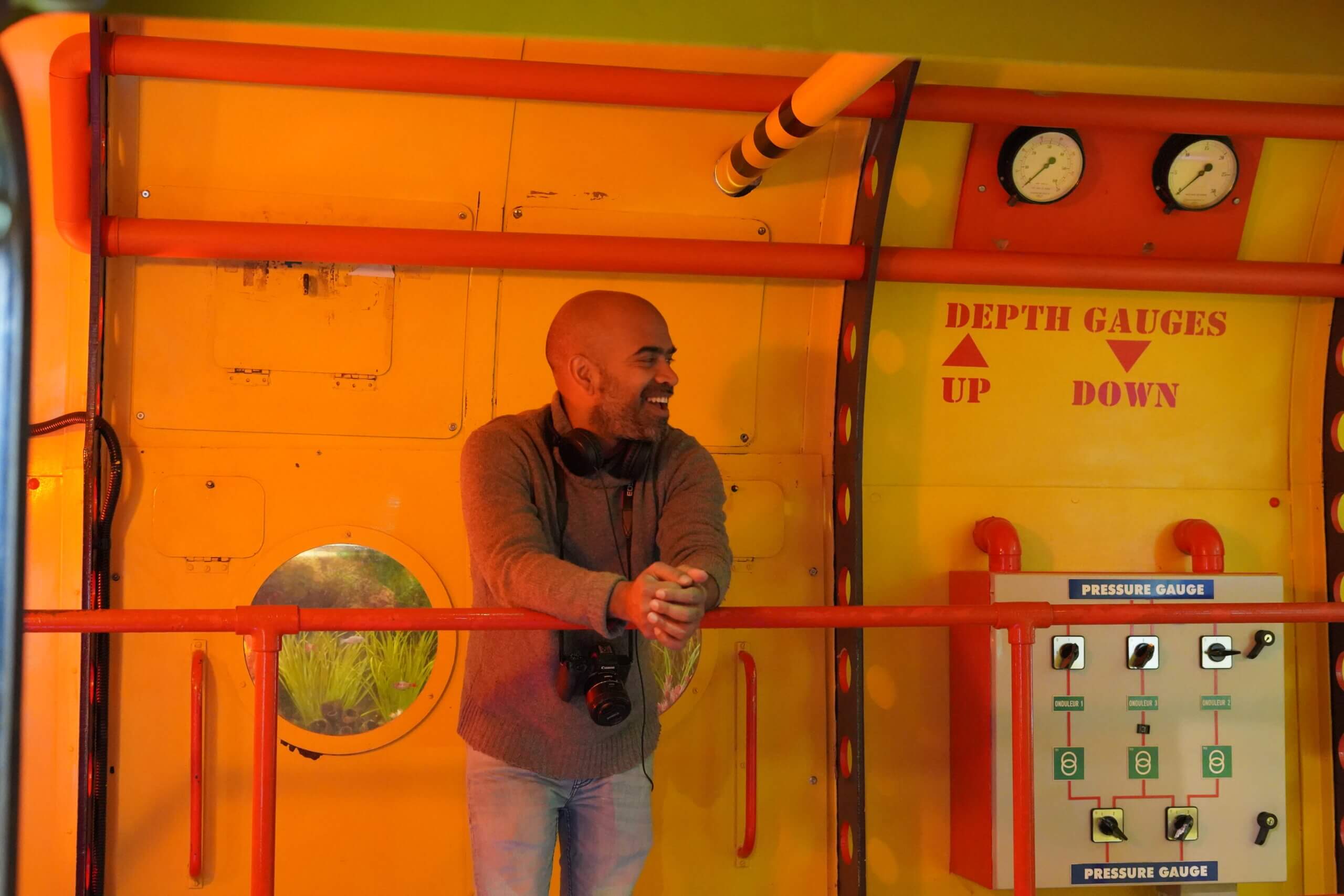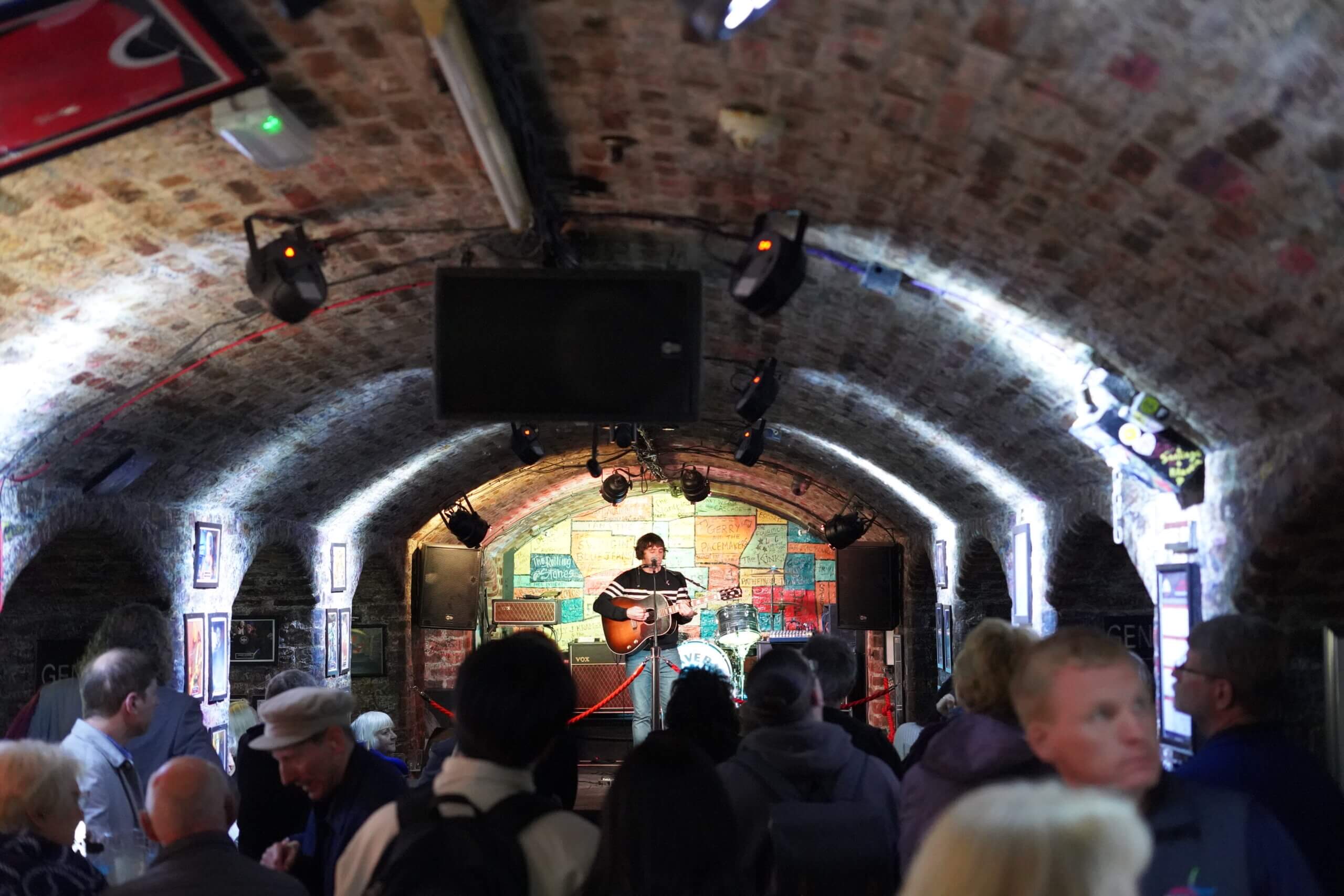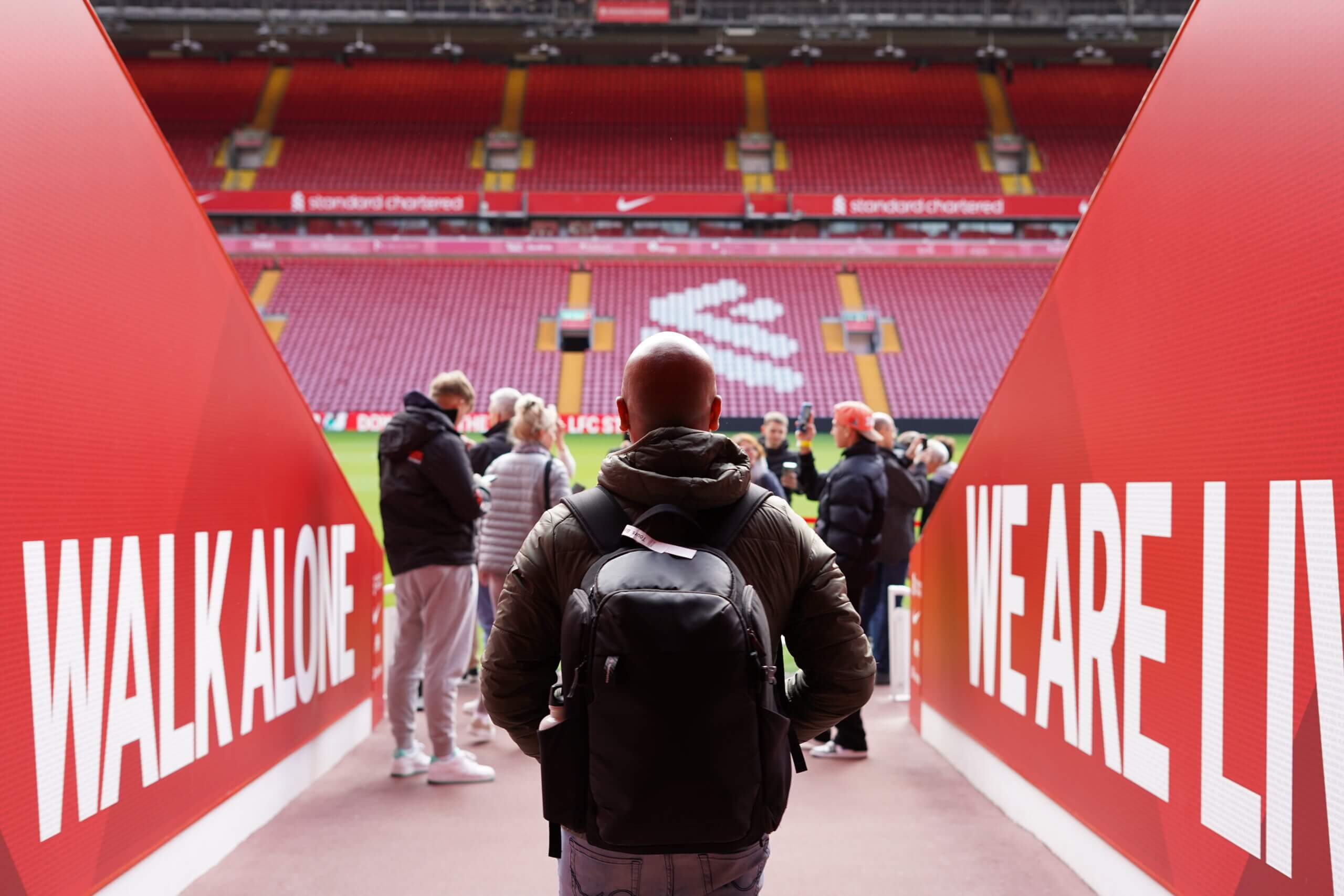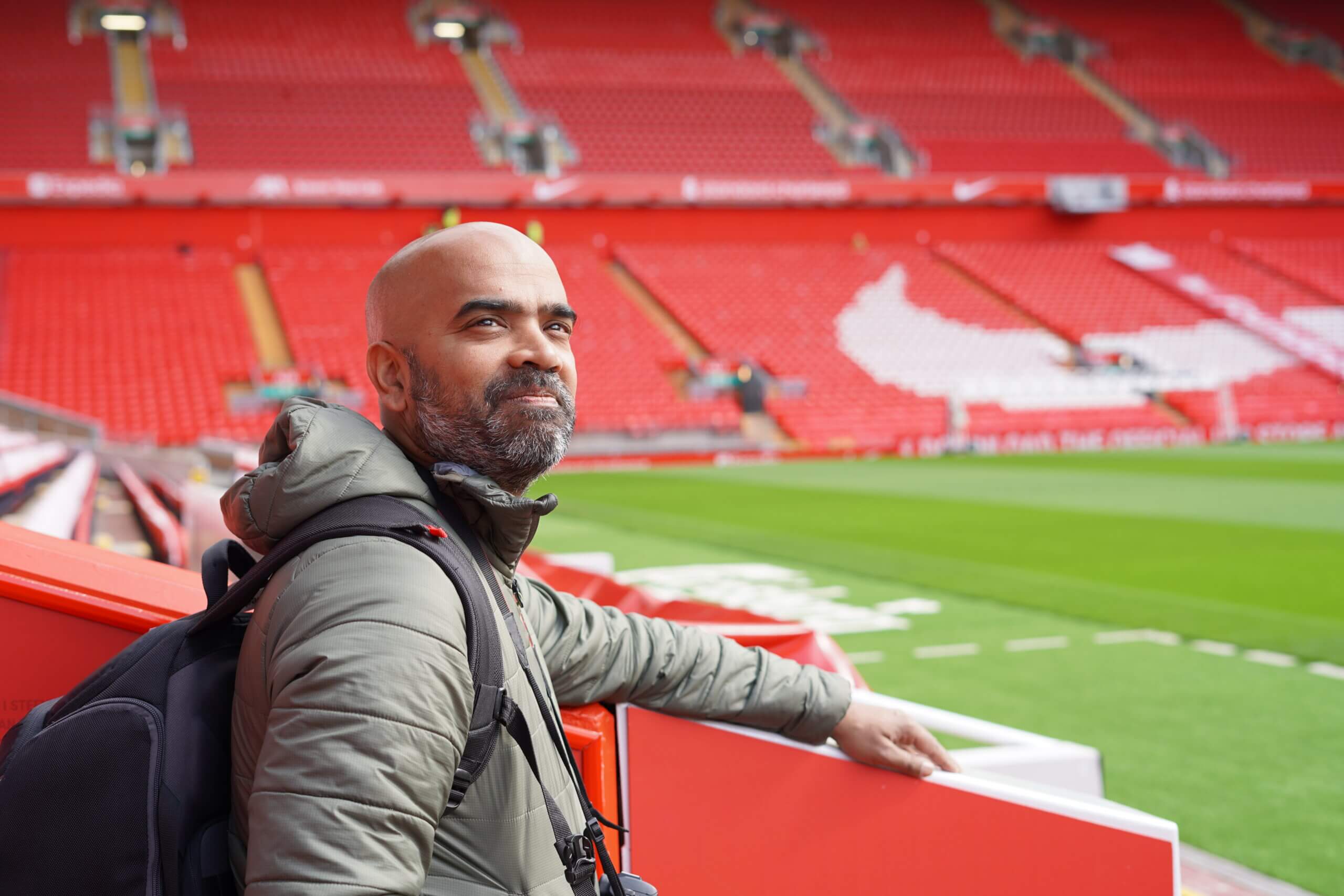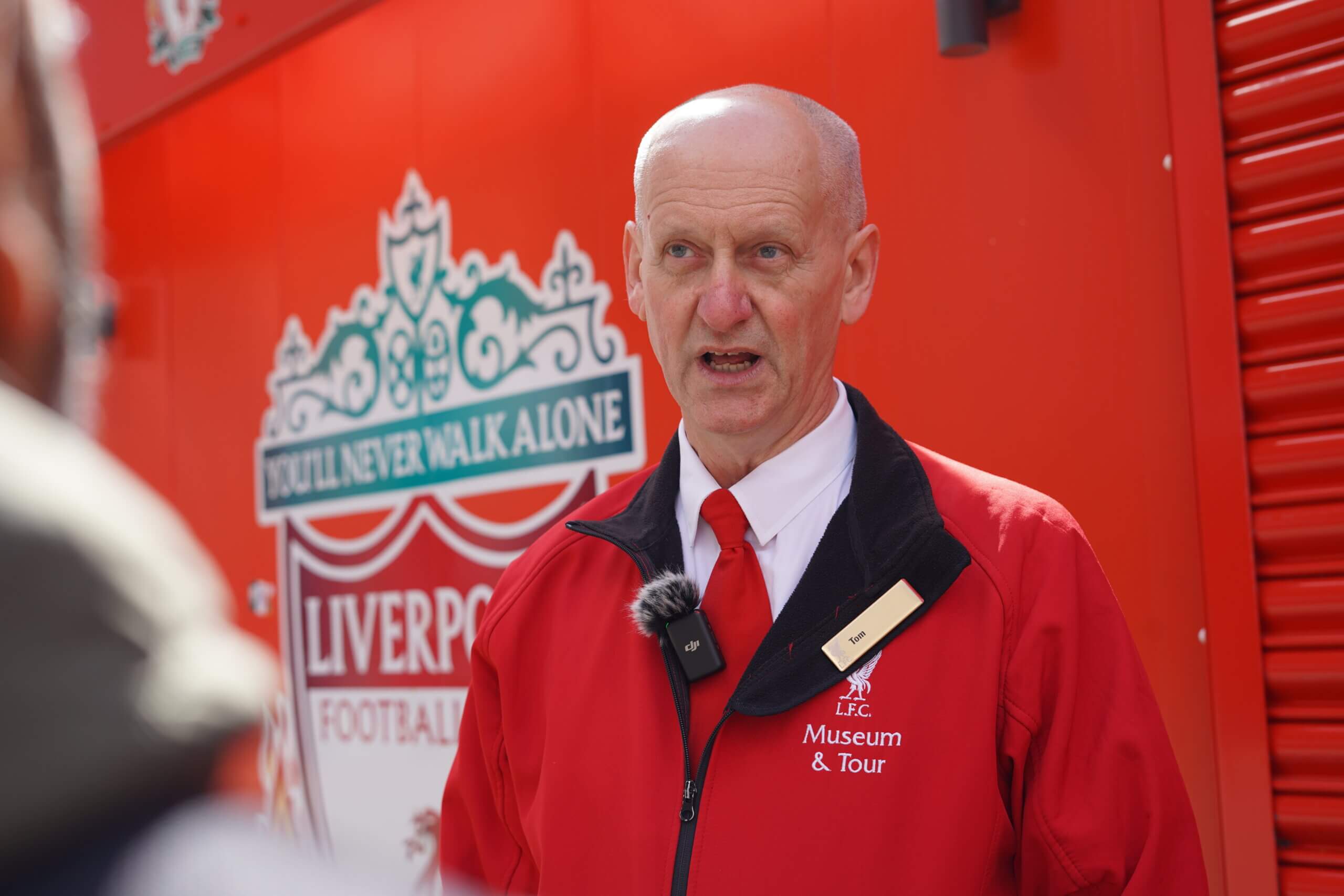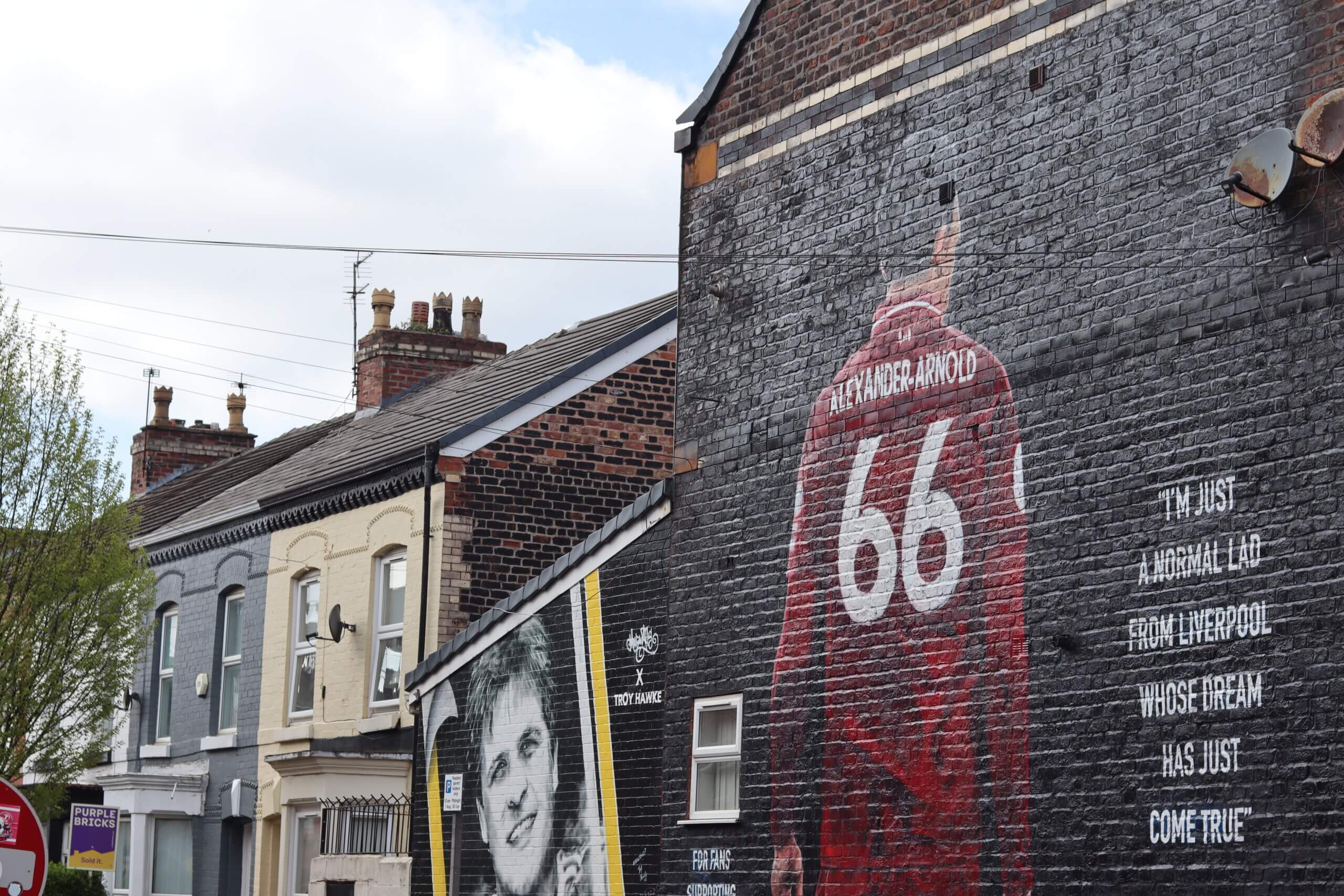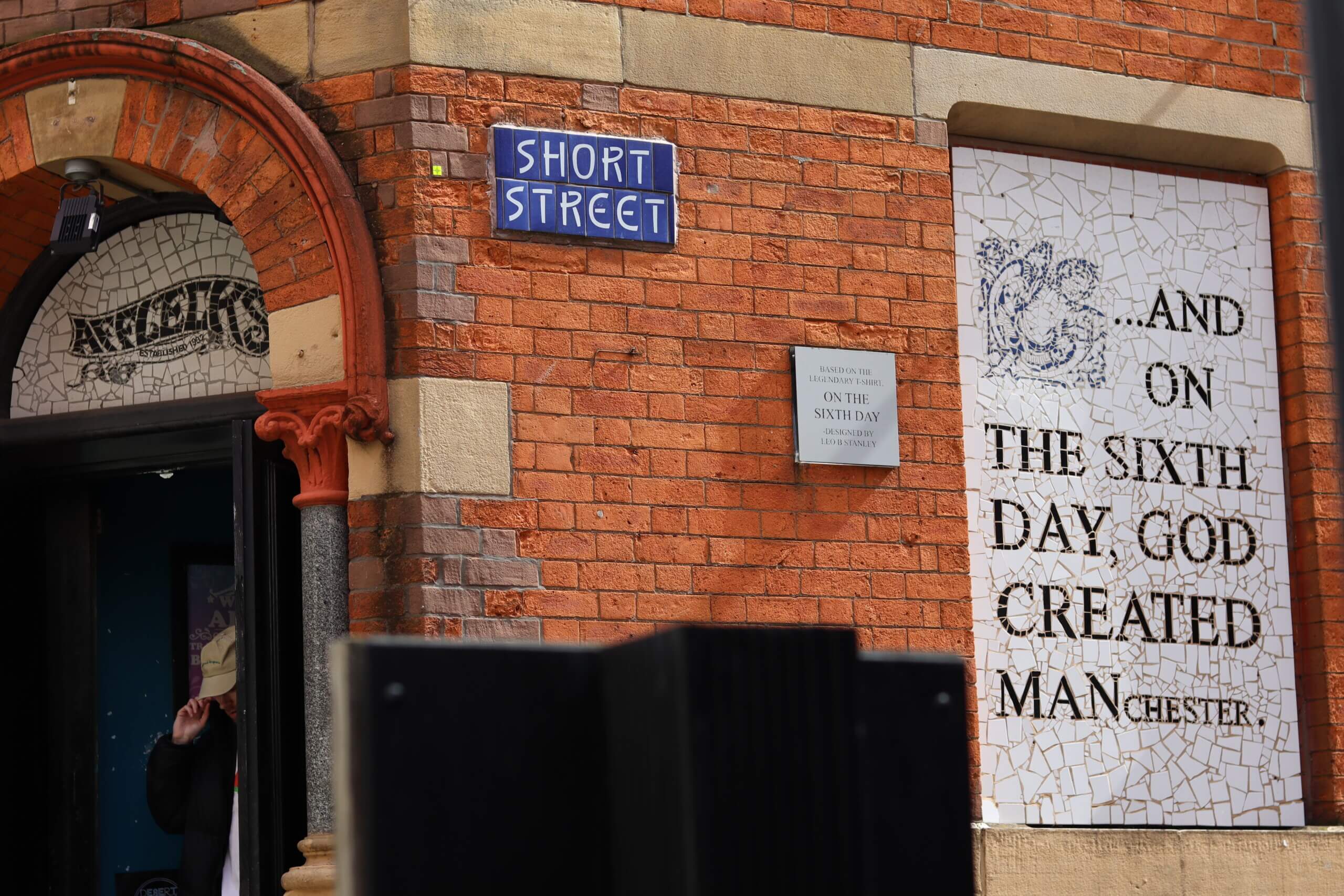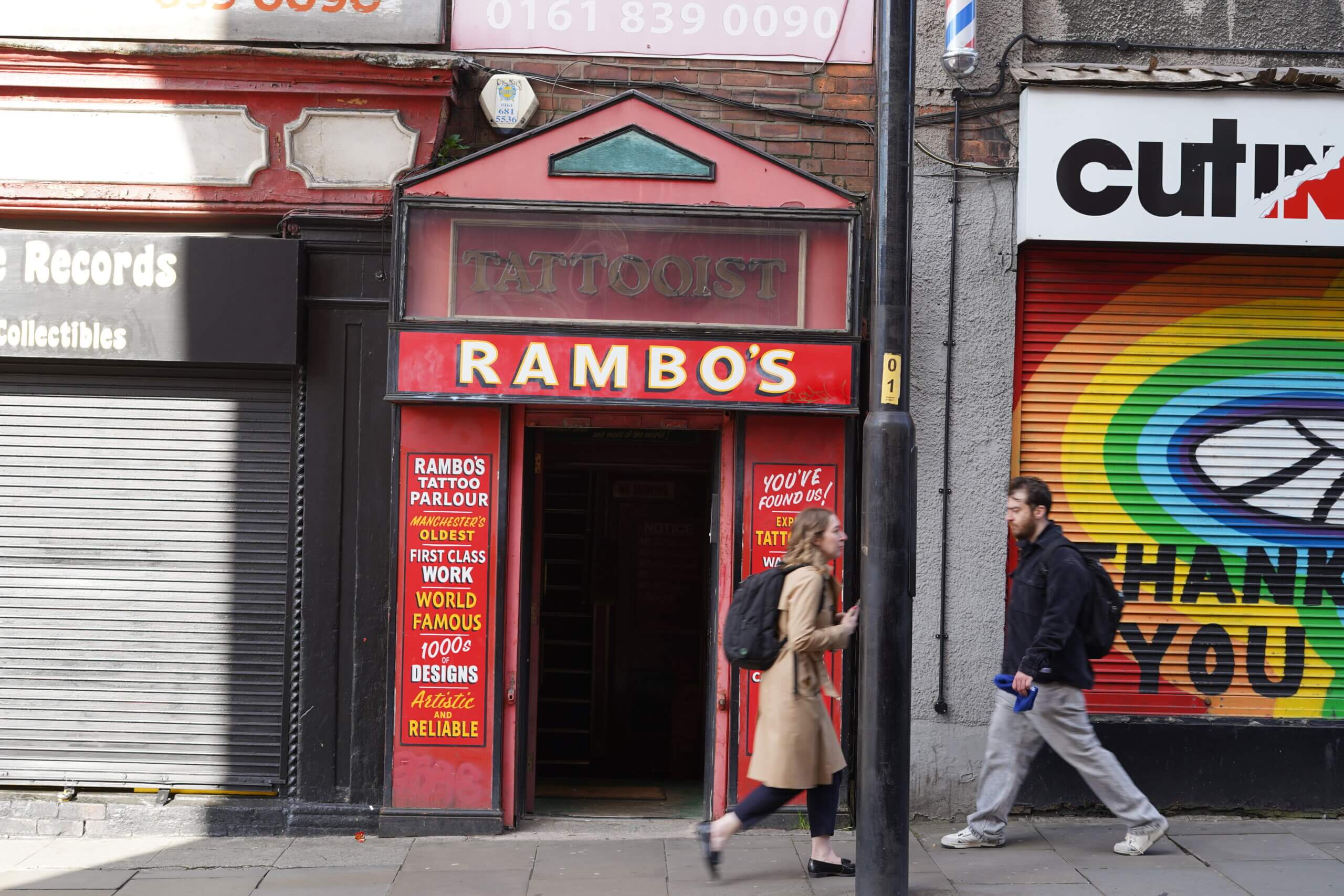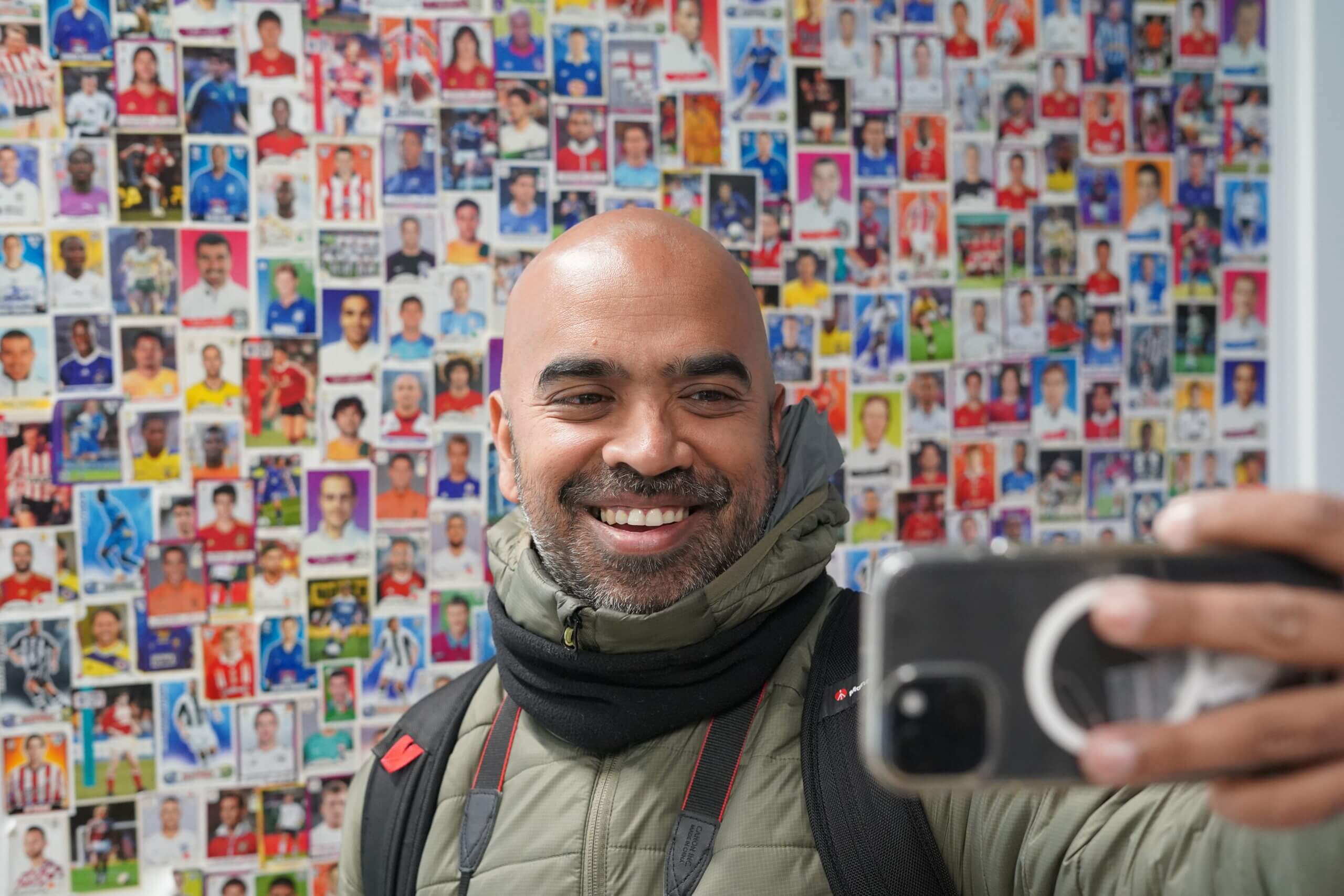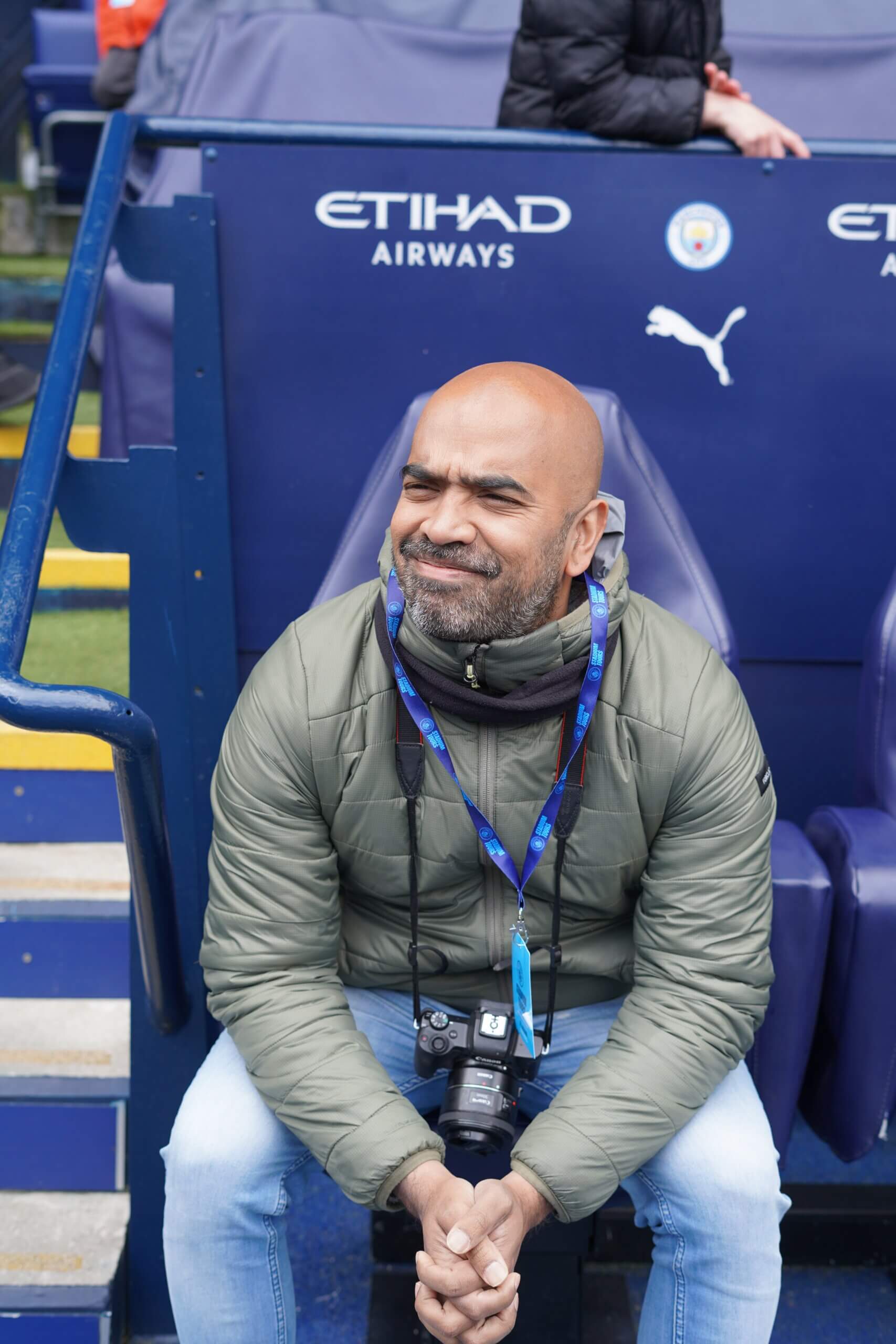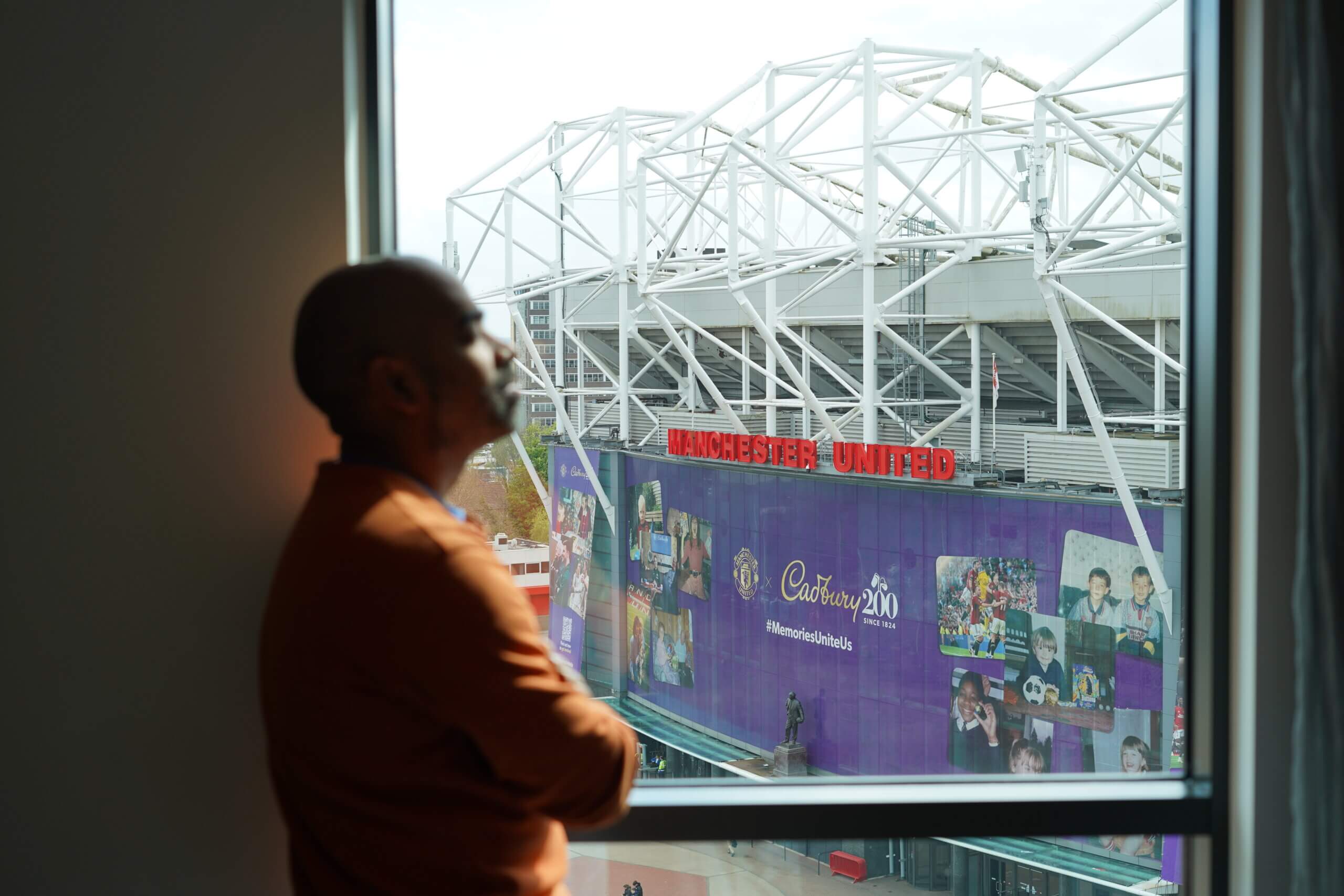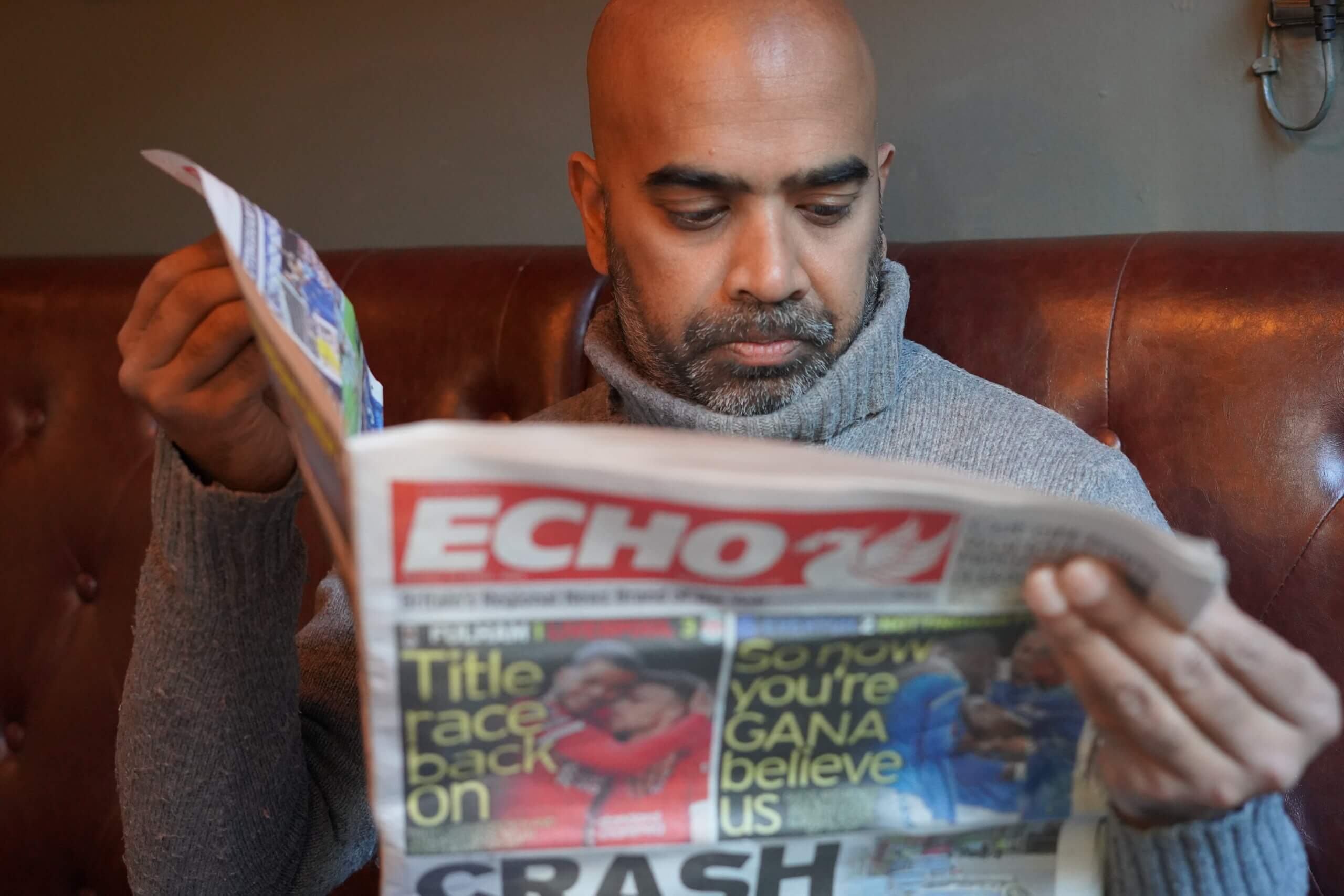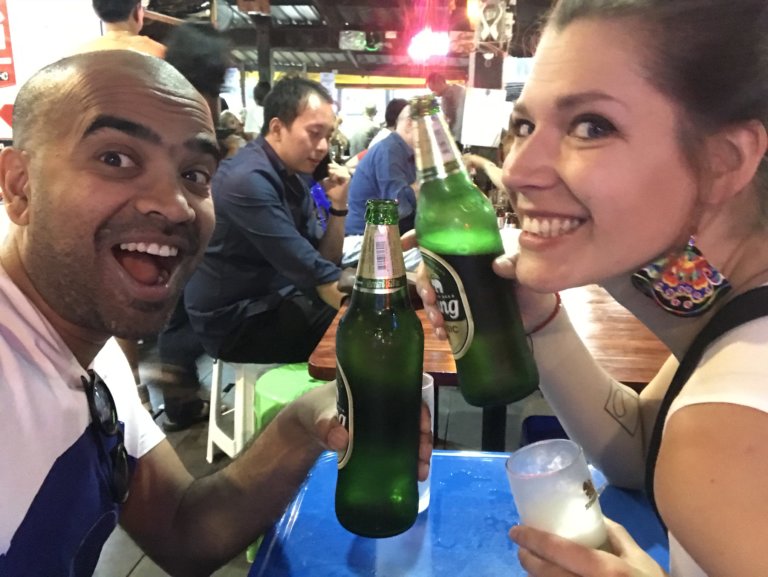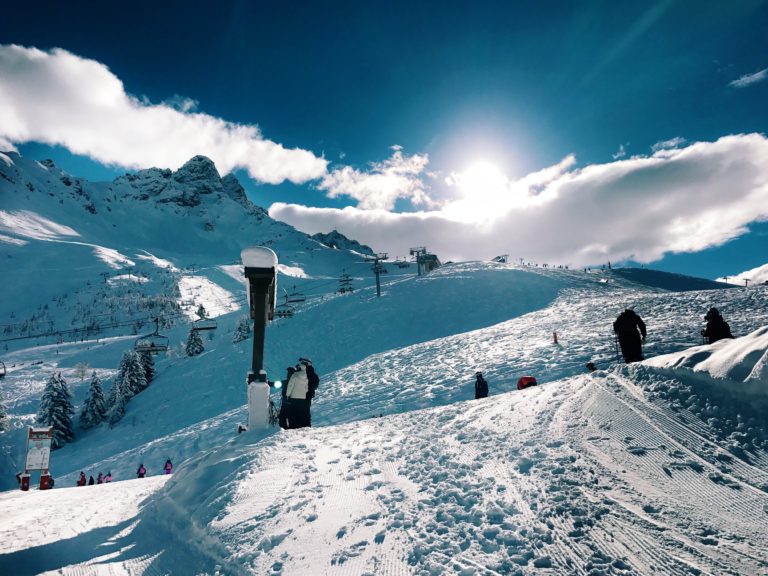That’s why they call it the beautiful game
As they would say in Scotland, it was blowing a hoolie on the North Sea. After being tossed around all night like tiddlywinks in rough seas, by the time we approached dawn, the waves flatlined and a calm, cold blue eyed morning greeted us as the DFDS cruise rolled into Newcastle.
So yeah. Why the hell am I here? (other than the pure love of slow travel and storms at sea) Well, I was on the verge of a footballing pilgrimage of sorts, to some of the greatest football cities of Great Britain.
I would start first in Glasgow, then Newcastle, then onto the great rivals of Newcastle – Sunderland, then onto Liverpool and finally Manchester. So, a distinctly northern flavour. Over the course of a week, I had one key aim – to decipher what makes football so great in Britain and why people are so mad about this beautiful game.
I think I should start by asking myself.
Why is football so special to me?
I grew up near Manchester in a place called Oldham. And in the late eighties, Liverpool was the team. There was only Liverpool and Everton. Manchester United and Manchester City were in the doldrums.
Plus, it was the era of Barnes, Dalglish and Rush. These were the 3 most fearsome forwards of their era. Then we had Alan Hansen in defence. It was a great Liverpool team to watch.
I think I was 6 years old when I watched the Merseyside derby on TV. I was immediately hooked, and I’ve never looked back since. It’s been a lifelong addiction and passion. I think briefly when I went to India, I lost the passion and became hooked on cricket. However, the moment I set foot back on British soil and went to university in Scotland, I started watching Liverpool again, and it just came flooding back. The passion, the love of the game. It was always there.
Since leaving Britain in 2012 and embarking on my nomadic journeys across the world, football has been my lifeline to Great Britain, to my identity of being British. Wherever I go in the world, I try to watch the Liverpool games at supporters clubs around the world. I’ve made so many friends thanks to following Liverpool. However the best thing, when I see Anfield on TV and I hear the anthem, You’ll Never Walk Alone, it just brings back all the memories of my childhood and all the emotions, the face of my father and friends I have met along the way. Football is my connection to Britain and to me. After the disillusion of Brexit, this trip would be a way of reconnecting with my British roots and a more innocent, version of myself.
1. Glasgow
‘Some people think football is a matter of life and death. I don’t like that attitude. I can assure them it is much more serious than that”
Bill Shankly
I start my pilgrimage way up north on the south side of Glasgow. It is a typical wet, dreich day. The faint drizzle gets heavier as a thick gust swirls across the thick clumps of uneven turf and eats into our skin. There is no protection from the elements. We are standing on the edge of the Queens Park Recreational Ground. To most casual observers or passers by this would be the most nondescript field and patch of grass, except that this is no ordinary field. The haloed piece of turf is where THE first game of football was ever played, back in the Victorian era.
Just a few steps away, we walk upto the Queens Park Bowling Club, which at first sight, may not look much, but you are now looking at the worlds first ever purpose built football stadium that could hold 20,000 back in its day. These are just one of the many amazing facts you will discover on the incredible Three Hampdens Tour, led by the warm, articulate and passionate Lindsey Hamilton.
‘If you ever go to the Fifa museum in Zurich, you will see them say that the history of football started in 1864 with the formation of the Football Association which is the English football association. We would argue that the game started well before that, here in Scotland, not a bunch of English guys in a pub!’
Lindsey Hamilton, Glasgow Football Tours
We hop across the road to the second Hampden Park stadium, which most people will know as Cathkin Park, once home to Third Lanark FC.
The park, while still in use for local community football is barricaded on all sides. It might have been the weather but I felt very sad, at the dilapidated state of what was once the Scottish national football stadium, the terraces surrounding it, now thick with overgrown weeds, nature having replaced the vast empty spaces.
Cathkin Park is a parable of what football has become. While at the top of the pyramid, rich clubs thrive in the era of hyper-commercialisation raking in billions of revenue from everything from naming rights to t-shirt sales, you have on the flip side, hundreds of historic clubs, community clubs that are on the verge of bankruptcy and extinction. Is the beautiful game is in danger of losing its spirit and soul? Still, with all its good and bad, many will argue that football has an important role to play in today’s society.
Cathkin Park is home to the Jimmy Johnstone Academy, a local community grassroots football club. While visiting Cathkin Park we were fortunate to visit the academy and learn about their various projects that include Freedom from torture, where former torture survivors who recently have arrived in Scotland have the opportunity to play football and rebuild their lives and improve overall mental wellbeing. I had the chance to sit down with Rabin Omar, a professional football player who has also been here working with the Jimmy Johnson Academy since he was 13 years old. I was curious to hear his perspective of local football culture
‘I mention passion but football is more of a religion here in Glasgow. You see how locals follow their team, week in week out and how it sort of flows through their life on a daily basis. They will live, breathe and think about their clubs most of the day.’
Rabin Omar
Lindsey agreed with Rabin on how football is a metaphor for life in Glasgow.
‘I think in Glasgow, it’s been ingrained in us since the beginning of time. We are obsessed with football. I think it comes from the fact that it is just such an easy sport for people to go to, just start playing in a park, and it just kinda grew from there.
I think football is just life for me as a Glaswegian. Like, I don’t mean that in, like, a whimsical sense. I mean, like, it’s ups and downs, the same way that life is. And that’s how I always see things, you know. I literally live my life, if I’m having a tough day, tough morning, or even something annoying has happened. I’m like, give me 2 halves. And it’s like a reset. You just go again.’
Lindsey Hamilton
The tour appropriately finishes with a pint of the local Tennents at the fantastic Rose Reilly Pub, a pub dedicated to Scotland’s sole World Cup winner.
Tourist essentials
You can book Lindsey Hamilton’s brilliant Three Hampdens Walking Tours via her website. Tours last 2 hours and cost £15 for adults and £5 for kids.
Just like football, the weather in Glasgow was a game of 2 halves. Morning, absolutely shite, drizzling rain and grey, afternoon – blue skies and beautiful sunshine. It was perfect weather for a wander through the west end of Glasgow. Packed with vintage shops, art galleries, fabulous restaurants, a great bar scene and some breathtaking architecture, the West End of Glasgow is a must on any visit to Glasgow. Definitely make time for the Kelvingrove Art Gallery and Museum (Argyle Street), probably the best free museum in Scotland and the UK, from its Ancient Egyptian artefacts to amazing animal displays. If you are a Liverpool fan and looking to watch their games, hop later to The Record Factory (17 Byres Road ), which is the home of Liverpool fans in Glasgow. Great atmosphere, nice staff plus reduced drinks prices during the games. If you are hungry and looking for some scran, you can hop into the University Cafe (87 Byres Rd) few doors away where you can get your fish and chips (£7.50) fix or if you dare, follow in the footsteps of Anthony Bourdian and try the deep fried Mars Bar, £3.50 ) and deep fried egg. Or you could sample another iconic Scottish dish, Haggis Neeps (turnip) and Tatties (potato- £13.95, vegan version available) at Rab Ha’s (83 Hutcheson Street) in Merchant City.”Rab Ha”, short for Robert Hall, lived in the area in the 19th century and was infamous for his love of fine food, earning him the moniker, the Glasgow Glutton!
2. Newcastle
‘Unlike other towns and cities in the UK, our stadium is right in the city centre so it forms part of the fabric of the city, not just metaphorically but literally.’
Eddy Hope, Tyneside Life
When you come to Newcastle, the first thing I notice is how the city revolves around the stadium, St James Park which is slap bang in the heart of the city. It literally takes us a 15 minute walk to reach the stadium from the train station. Along the way, we visit a terrific football memorabilia shop, The Back Page, on St Andrew’s Street. If you want to get a first hand taste of Newcastle Geordie culture and an insight into the history of the city, the club, then this shop/fans museum is an essential stop.
The scale of the passion and support for the club becomes apparent to me when I see the number of bars and pubs. Newcastle enjoys the highest concentration of football pubs within a half mile radius of any football stadiums in Britain – 108 to be precise.
We visit a few of them, the Newcastle Arms and another local favourite, Rosie. We make a quick pitstop at the German inspired beerhall, Wunderbar, which is an enormous venue and then finish at probably the most famous Newcastle supporters bar of the lot – The Strawberry, which has been sitting right across from the stadium since 1859. The pub truly reflects local devotion to the black and white stripes, with pictures of Newcastle footballers past and present. If you can’t get match day tickets, the next best thing is to watch the game at the Strawberry. You will hear the roar of football fans from the pub and if the team wins, then it will be utter bedlam in the pub.
For football fans the 1.5-hour tour of St. James Park is must. Spend time going behind the scenes of where the real matches take place at the park. Gain access to areas that aren’t normally open to anyone but players, coaches, and officials. Get a chance to slip into the media suite, and see where players and managers are interviewed before and after games. Plus, you can even sit in your favourite players spot in the home locker room.
Tourist essentials
Obviously beyond St James Park, there are the various statues outside it (Shearer, Bobby Robson, Jackie Milburn), and the little Alder Sweeney memorial garden to remember the two fans who died on the MH17 flight.
Then there’s The Strawberry pub which I mentioned, just opposite the ground which is a traditional meeting point for fans.
There’s a terrific football memorabilia shop, The Back Page, just a stone’s throw away, on St Andrew’s Street. There’s a couple of wall murals, one off Northumberland Street, celebrating NUFC legends, and one on Morden Street, remembering Ish Bamba, a project worker for the Newcastle United Foundation. And finally there’s the Castle Keep itself, from which the football club takes its logo.
Other essentials. Do make time to visit the stunning Grey Street which has some of the finest examples of Georgian era architecture anywhere in Britain and was named after former Prime Minister Earl Grey, yes the very same person who was responsible for introducing Earl Grey tea to the country. Go for a walk along the Quayside, if time permits pop into the BALTIC Centre for Contemporary Art and also to nearby Ouseburn Valley, once the cradle of the industrial revolution on Tyneside and now a hub for the creative arts and also home to several outstanding independent pubs where you can sample great food, find live music and comedy acts throughout the week.
Finish off with dinner at the Thai House Cafe ( 93 Clayton Street ) in the city centre. Food portions are huge, all mains are below a tenner and the quality of food, and taste was outstanding. Sabrina tried their beef noodle soup and broth which was excellent, beef well cooked and tender while I had their massaman curry which was flavourful and so tasty.
3. Sunderland
All the great sports are defined by their intense rivalries. In Britain, especially in the industrial heartlands, the rivalries take on a life of their own, fuelled by a heady cocktail of history, geography, and sheer passion. While many may argue Rangers – Celtic to be the most intense rivalries, the two cities of Sunderland and Newcastle upon Tyne, separated by 12 miles (19 km), can lay claim to be one of British football’s harshest rivalries. The history of the Tyne – Wear derby is a modern-day extension of a rivalry between the two cities that harks back to the English Civil War merchants in Sunderland became a Parliamentarian stronghold in protest against the advantages enjoyed by their counterparts in Royalist Newcastle.
While it was almost impossible to get hold of tickets in Newcastle live (or any Premier League club unless you want to pay €€€€ ), I did manage to get tickets for a Sunderland match, thanks to a partnership between the club and DFDS Seaways. The two clubs have enjoyed contrasting fortunes with Sunderland suffering successive relegations while Newcastle’s fortunes have soared with the recent Saudi takeover. A short hop by train from Newcastle, the match day experience was a refreshing break from the razzmatazz of Premier league football. We land at noon and head to probably the most legendary of all Sunderland pubs, The Colliery Tavern.
On match day it gets lively early on with lots of passionate locals piling in for a few pints. We grabbed a pint of Carling and found ourselves chatting soon to Guido and Bastian from Germany who had come to see the match. Both passionate football fans, they love to catch football games across various countries in Europe. When I asked them if they had a favourite country for watching football besides Germany they mentioned Britain.
‘The history of the clubs here, the culture surrounding it, the passionate fans, the quality of football and the locals create a special atmosphere which is something we can relate to.’
They had been really impressed with the friendliness of locals and fans in Sunderland, something we quickly noticed. After a few pints in the Colliery, we headed to the legendary Fans Museum. Located in what was a derelict, former train station, the Fans Museum, the brainchild of Michael Ganley is not your archetypical fan museum. Michael has amassed an extensive collection of Sunderland football memorabilia and even football shirts worn by Maradona and Beckham. The shirts are not just there to be seen. Families, children come in every day asking Michael to wear a football shirt of one of their icons, to which he happily obliges. The museum also shows football matches and on match day is packed to the rafters with often 3 generations of families gathered in the space.
I come away impressed with the strong sense of community spirit in Sunderland. While the team continues to struggle, the dedication of the fans remains unquestioned. If there was an award for the most passionate fans, Sunderland fans would definitely be up there with the best fans in Britain.
I ask Michael how he would sum up his club in one word and he mentioned a word, I would hear a lot from fans that week.
‘Passion! If I would sum up my club in one word I would use something written on the back of my shirt- Passion. It’s passion. Passion in belief. Passion in disbelief, but it all comes under one roof. Whatever the outcome of today, there is always tomorrow and that’s the passion. We never walk away from our beliefs and our true love, really and that’s how you would sum our football club and city.’
Michael Ganley, The Fans Museum
Sunderland lost 1-0 to Millwall that day. It was not the greatest game to watch. One of the highlights was half time grub when I treated myself to chips with curry sauce. So good.
Still, people. I left with only the best memories of all the warm, friendly passionate locals we met.
Tourist Essentials
The Nexus Tyne and Wear Metro provides a service between Newcastle upon Tyne to Sunderland every twenty minutes. Board a train heading in the direction of South Hylton and disembark at Sunderland or directly at the Stadium of Light.
4. Liverpool
“Liverpool is the pool of life, it makes to live.”
Carl Jung
Liverpool. I emerge from the train station, serenaded by seagulls, the air smelling of diesel, fish and tar. In the distance I can see the dark greyish blue blur of the Mersey, swirling amongst the skyline of the famous waterfront architecture. Even though I have never lived in Liverpool, it feels like home. I have the same sense of familiarity when I visit Hamburg. Maybe, I have a thing for port cities. Places where you have a bit of grit rubbed in with some glamour. After dropping off our bags I go for walk around the city centre and waterfront. Liverpool One. The spectacular array of old and new architecture that is concentrated around the dock that would be the envy of any modern city.
Then there is the Beatles connection. We pop into the Beatles Story Museum. From childhood lives to their first hellos, at the Beatles Story Museum you can learn about the band’s life before their glory days. Spot the stars as young boys in black and white family photographs. See the instruments from their early days – when their passion for music first ignited. Look back at their transformative years when they took to the stage as the modest Quarrymen before blossoming into the Beatles. It’s packed with memorabilia, such as John Lennon’s glasses, Ringo’s drums and George’s first guitar, as well as recreations of key locations like The Casbah and Cavern Club and Abbey Road Studios.
I pause for a moment to enjoy the architecture of the Museum of Liverpool which was designed to resemble the trading ships that once dominated the harbour. At the far end of the waterfront, I find the beautiful bronze statue of the four Beatles standing in front of the majestic Royal Liver Building, once the tallest building in Europe. From the waterfront, it is a short walk through the fabulous Liverpool One before reaching the most iconic street of the city, Matthew Street. It is a narrow alleyway that was once bustling with tradesman. However, in recent decades it became a hub of nightlife and home to the most iconic Cavern Club, where the Beatles had their first break. The club hosts a roster of live bands from 11am everyday and is a must see when in Liverpool. Entry tickets cost just 5 pounds.
Liverpool’s other legendary export is of course football. Every club boasts that their fans are the best and after meeting fans from Glasgow, Newcastle and Sunderland, it is tough to argue against that but… Liverpool fans are truly a unique species. The first and only time I went to see a game at Anfield, the noise in the terraces was something different. Everywhere I walked in the city, there was a buzz about the place and the club… you can feel the passion of the fans. There is a strong sense of identity, set of values that comes with being a Liverpool supporter. Fans are proud of the club’s working-class roots and the spirit of solidarity that characterises Liverpool as a city. I asked Liverpool superfan and Beatles tour guide, Dale Roberts about what makes Liverpool fans so special
My city and my club is different. I don’t think there’s any city on earth like Liverpool. What makes Liverpool different is the fact that we’ve accepted difference. Liverpool is a melting pot of communities and cultures. There’s so many different types of people, so many different types of ideas. And I love the line that Gerry Marsden said, not in You’ll Never Walk Alone, but in Ferry Cross the Mersey. He has a line in the song, which is
we don’t care what your name is, boy.
We’ll never turn you away.’
Dale Roberts, Liverpool Eco Tours
And that epitomizes Liverpool for me.
Liverpool is all-embracing. It is all-encompassing, but it is different because it has its own unique ideology, it has its own unique culture, but it’s got that unique culture by accepting so much else.
The Anfield Stadium tour is a must as part of any pilgrimage to Liverpool, even if you’re not a die-hard football fan.
The guides with their razor sharp Scouse wit are entertaining and informative. Highlights of the tour of course include the chance to enjoy epic views of the Anfield pitch from the top level of the Main Stand, a visit to the state-of-the-art home team dressing room and of course the chance to walk through the players tunnel and pass, touch the iconic This is Anfield sign and get a photo in Klopp’s seat in the dugout. The tickets also include entry to the Club’s interactive museum – The Liverpool FC Story, with nearly 130 years of Club history plus all the silverware including all six European trophies. After the tour, I would also recommend a walk around Anfield to see all the beautiful murals of Liverpool players, past and present.
Tourist Essentials
For Beatles fans, two pubs I highly recommend (Cheers to Dale for the introduction) is the Ye Cracke (Rice Street), the pub that John Lennon used to frequent with his wife Cynthia when he was a student at the arts college around the corner of the pub. The walls are covered with Liverpool- and Beatles-themed paraphernalia alongside some local art of variable quality. When we visited, there were a few locals in but it was quiet, not many tourists. Second must visit pub, right from the Liverpool Philharmonic Orchestra is the flamboyant ‘Phil’ aka The Philharmonic Dining Rooms (36 Hope Street) where Paul McCartney did a secret gig on the James Corden’s The Late Late Show and even Buddy Holly performed. It is a stunning wood panelled pub, with ornate furnishings and the most beautiful toilets you will ever see in a pub.
5. Manchester
Separated by just 35 miles, Manchester enjoys a lot of key similarities with Liverpool – striking architecture, rich musical heritage, tons of culture and things to do, great nightlife and of course their passion of football. Despite all their similarities, the rivalry between the cities, the clubs and the locals is fierce. Not as fierce as Glasgow but still, its a rivalry that defines the cities, especially given the rise of Manchester City over the last decade. The city is now home to not one but two of the biggest clubs in Britain and the world: Manchester United and Manchester City. Both share an intense rivalry with Liverpool but many would argue, including myself, that United remains Liverpool’s biggest rivals. The rivalry goes back decades and may have started with the building of the Manchester Ship Canal in 1894 or from the industrial era fallout between Mancunian industrialists and Liverpudlian merchants.
Personally, while I loathe both Manchester clubs as any Liverpool fan would, I love both cities. Having grown up near Manchester, a big part of my childhood was spent here. As our paths have diverged over the last few decades, on every visit, I see something new and leave amazed, always wanting to stay longer. One of the areas I love coming back to and rediscovering is the Northern Quarter, with its glut of creative and alternative flair that reminds me a bit of Kreuzberg or Shoreditch. We start with an incredible brunch at Pot Kettle Black, a northern take on Australian breakfast culture. The food, service is top notch and such a nice lively vibe – great place to start the day. We then pop into the fun and colourful fashion boutique, Thunder Egg whose clothing indulges in our nostalgia for trends from the past decades, from vintage frocks to noughties fashion trends. From there it is a short hop to the world famous Afflecks, which has been an outlet for independent designers and traders across four floors.
Since we are on a footballing pilgrimage, no trip to the Northern Quarter would be complete without a visit to Classic Football Shirts. What started as a challenge between two friends to source classic football shirts from the last few decades and sell them via internet, became a massive enterprise selling football shirts from across the world from the last 50 years.
Even though I no longer have a record player, I still love the old school and physical feeling of being in a music store, browsing records and listening to them on turntables before almost buying them – if that sounds like you then definitely pop into Piccadilly Records. The staff are super friendly and approachable. It is the kind of place where you get talking to people and that’s how we met the amazing Lydia Huna.
As a proud Mancunian and United fan I had to ask her what she loves about Manchester….
‘Community. I think my favourite thing is that despite all the changes that Manchester is undergoing, and a lot of those changes are not great. You know, they’re corporate and steeped in bureaucracy. I think my favourite thing is the history of community and, you know, the struggle that exists because of the north/south divide and the economic challenges that the north has sustained and faced for decades and decades and decades since forever, that gave people no choice but to congregate and be together and look at one another and come together. And, that ethos still runs true, and it pervades in, I think, most Manchester culture, all Mancunian culture, northern culture in general. Like, you just step into a shop like this, and immediately, like, you’re confronted with the culture, and the people. Like, I come in here and immediately start singing. I don’t even know what his name is. He just goes by Pasta Man. I don’t know what Pasta Man’s name is. I just think of him as Pasta Man.
(Man behind counter: Oh, that’s Paul Pasta.)
….Oh, it’s Paul, Pasta Paul, oh, there we go. But, nevertheless, like, I’ll refer to people by their nicknames before their actual names because you’re confronted with that before anything else. And, just, yeah, like, the prevailing sense of, where these connections take you. Like, Matt works at White Hotel. He does like, runs gigs there. I’ve got a whole community of friends there. It’s so close knit. Some might say incestuous. Manchester is lovely. It is wonderful plus that was a very long answer.’
The topic then turned to football and I had to ask her how she fell in love with her club.
‘They made a film called Bend It Like Beckham in the 90’s which is synonymous with my childhood like Man United. Like, those glorious summers and knowing that David Beckham was playing, I think that’s how I fell in love with it, but I also fell in love with it because my dad was a Man United fan. I think, through my dad and through the kids that I went to school with and playing football as a kid in the garden with my dad and, yeah, rocking a t shirt with a big 7 on the back of it.
Initially, the world was red. I am Manchester United through and through. We haven’t been doing so good in the Premier Leagues for some time now, but, nevertheless, it’s Manchester United till I die. And real Mancunians support United. Don’t listen to what those City boys say. It’s not true. ‘
Tourist Essentials
If you could not get tickets to the game but want to watch the football in a nice pub – I have 3 tips for you. Try the Tib Street Tavern (74 Tib Street) in Northern Quarter – good grub, ok priced drinks, BOX Deansgate (125 Deansgate) bit more modern, lots of screens and outdoor seating and finally The Lost Den (144 Deansgate), a warm and welcoming gastro pub right in the heart of Deansgate. Also if you are a Manchester United fan, you have to pop into The Old Nags Head (19 Jacksons Row) this is THE ‘George Best’ pub, lots of football memorabilia. Non football pubs that are definitely worth a visit are: The Peveril of the Peak and The Temple.
Also if you are United fan, definitely consider staying at Hotel Football, overlooking the Old Trafford stadium. Owned by former players Ryan Giggs, Paul Scholes, Nicky Butt, Phil Neville and Gary Neville, it has a rooftop 5-a-side football pitch, in-house restaurant and basement sports bar.
They have packages where for £109 ( £139, double occupancy) you can book a package which gives you a room in the hotel with Class of 92 themed toiletries & complimentary retro treats in the mini bar, 2 course dinner in their in-house restaurant and buffet breakfast.
Conclusion
Initially, this week my world was green or blue. Then black and white. Then red and white.Then red.Then red again.Then light blue.
One week. 5 cities. It was a breathless trip, maybe a little too rushed in the end. When we were hopping back on the plane, I had the feeling of wanting to stay longer. A pilgrim’s journey never ends. While it was hard to describe the emotions of all the places, all the people we met, the trip was definitely a reminder of the good stuff that makes Britain such a wonderful country to visit. Don’t believe the doom mongers. With all the ills and pains of Brexit, Britain remains a great place to visit. That is all thanks to the people, their warmth, the witty humour and of course, their passion.
Whatever you make of the divided loyalties, the tribalism, the religious zest, the incestuous love for their clubs, after this trip, the one thing that for me stood out when I try to summarise football culture in Britain and all the people we met, was the sheer passion. A passion borne from generations of families supporting a club, a passion born from long hazy summers in the garden playing with their Dad, a passion born from the love of their community and how you stand together in the eye of any storm, the unswerving loyalty to your identity and that unspoken rule of staying true to who you are. Call it old fashioned, call it foolish, call it romantic, wherever your loyalty lies, football in Britain exerts a magical almost mythical hold on us. There are no words to describe it. That’s why I guess they call it the beautiful game?
Disclaimer
This video was made possible thanks to the kind support of Visit Britain but all the views, good and bad are entirely my own.
